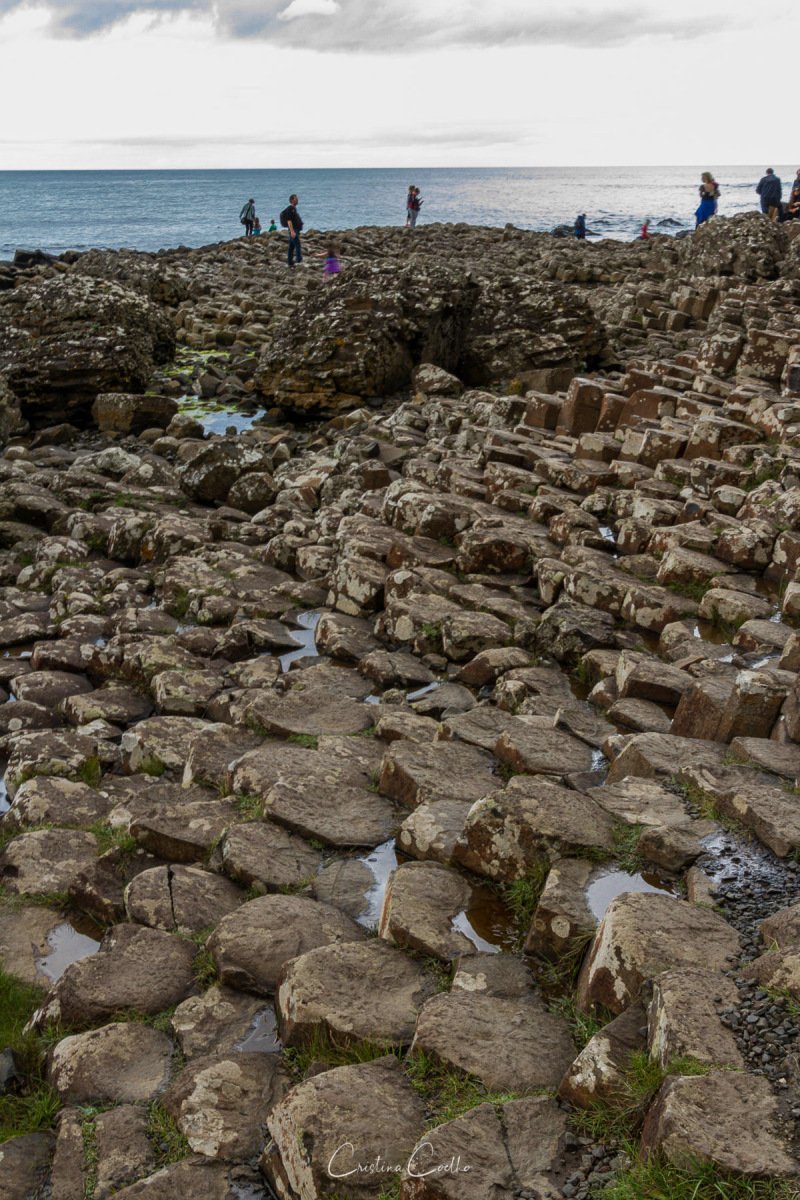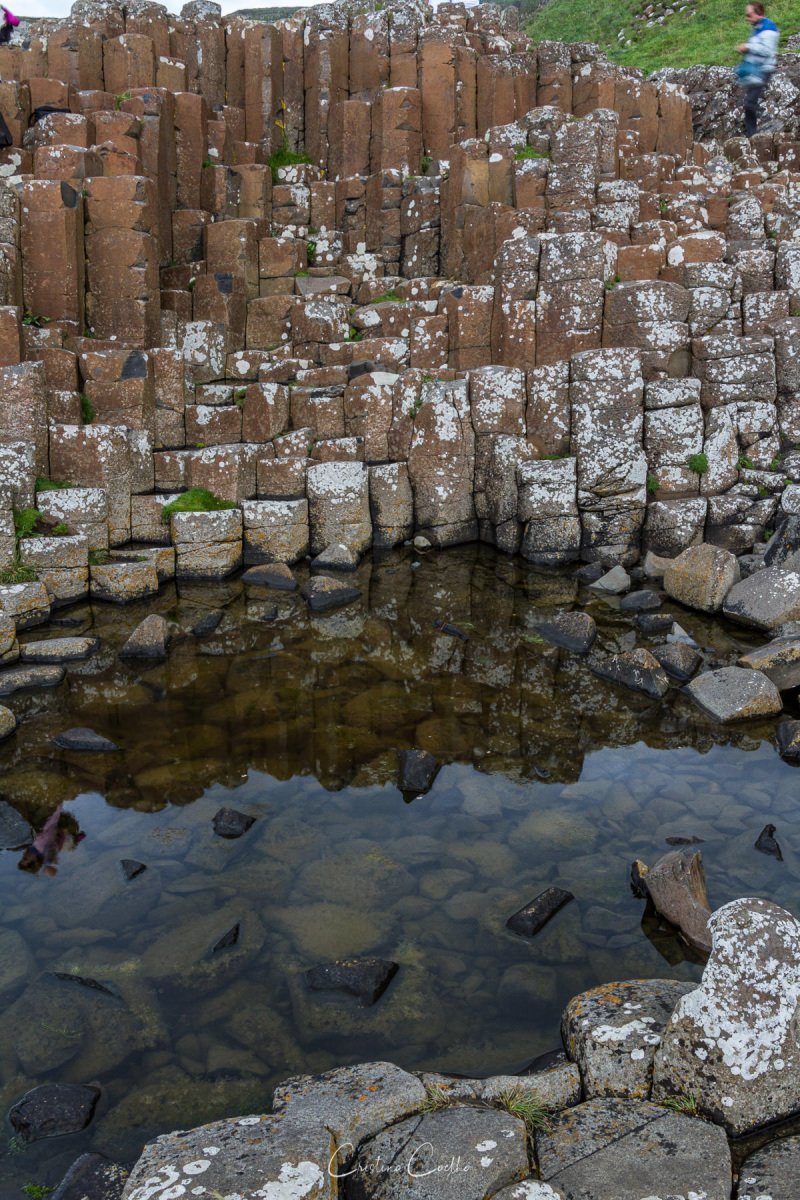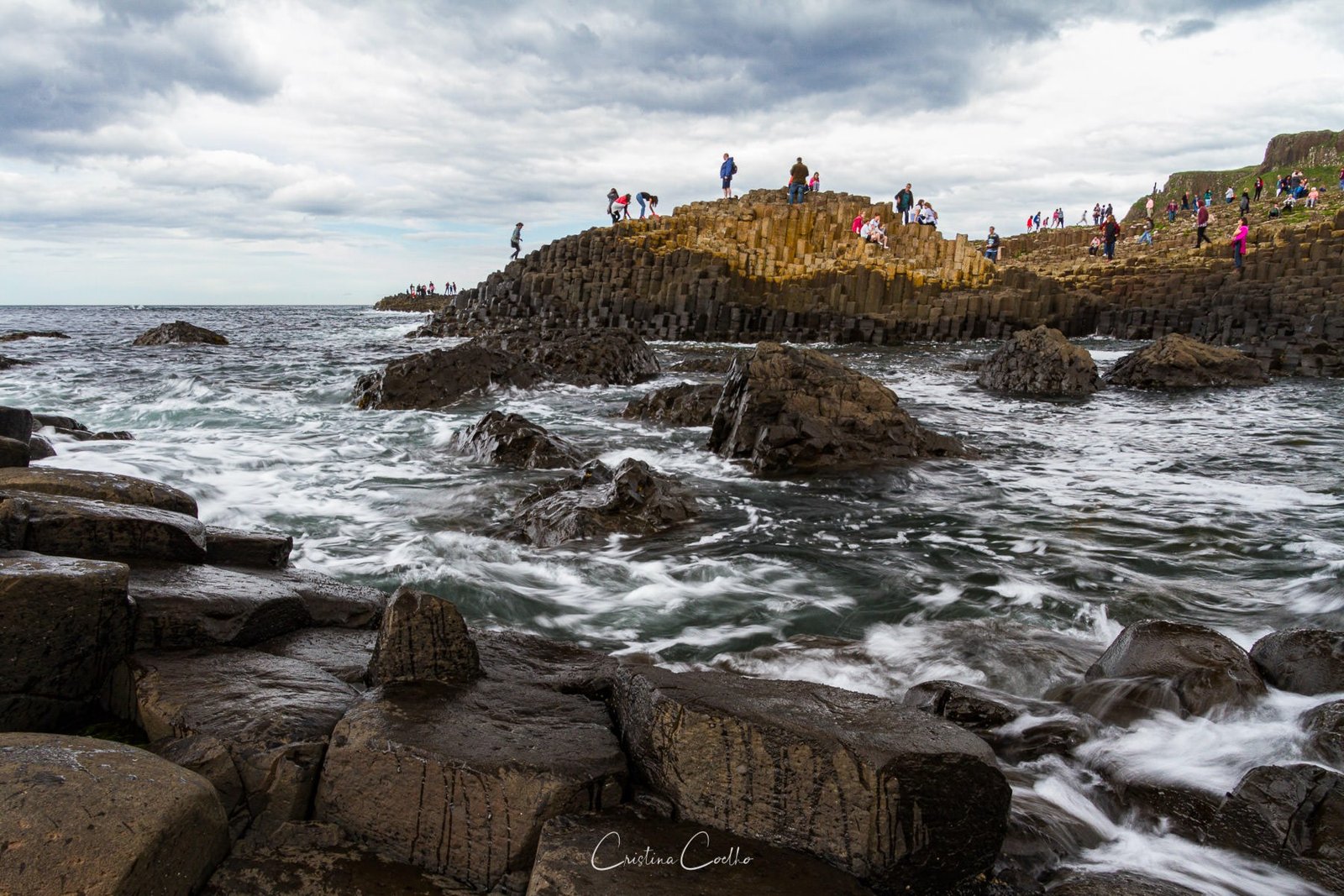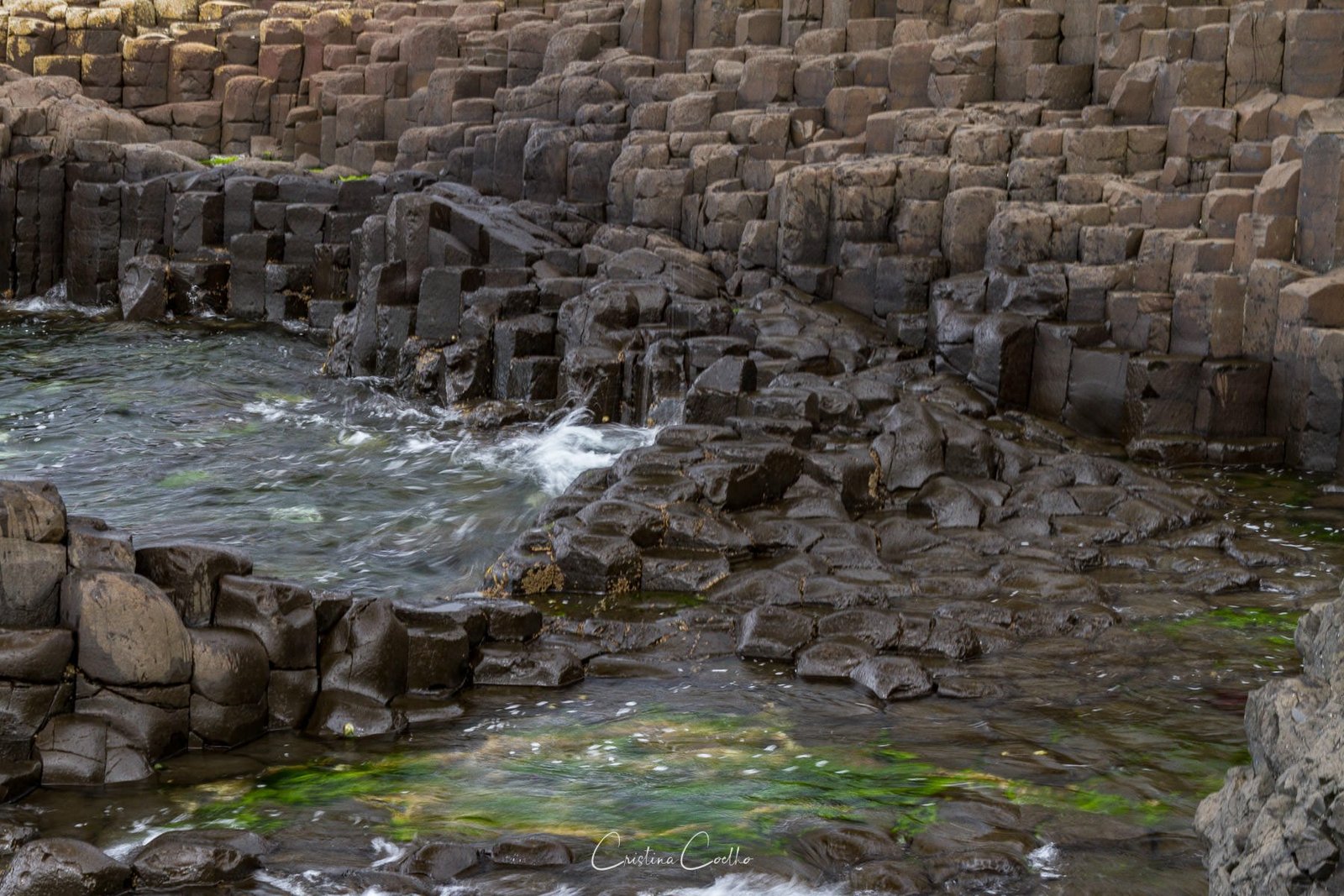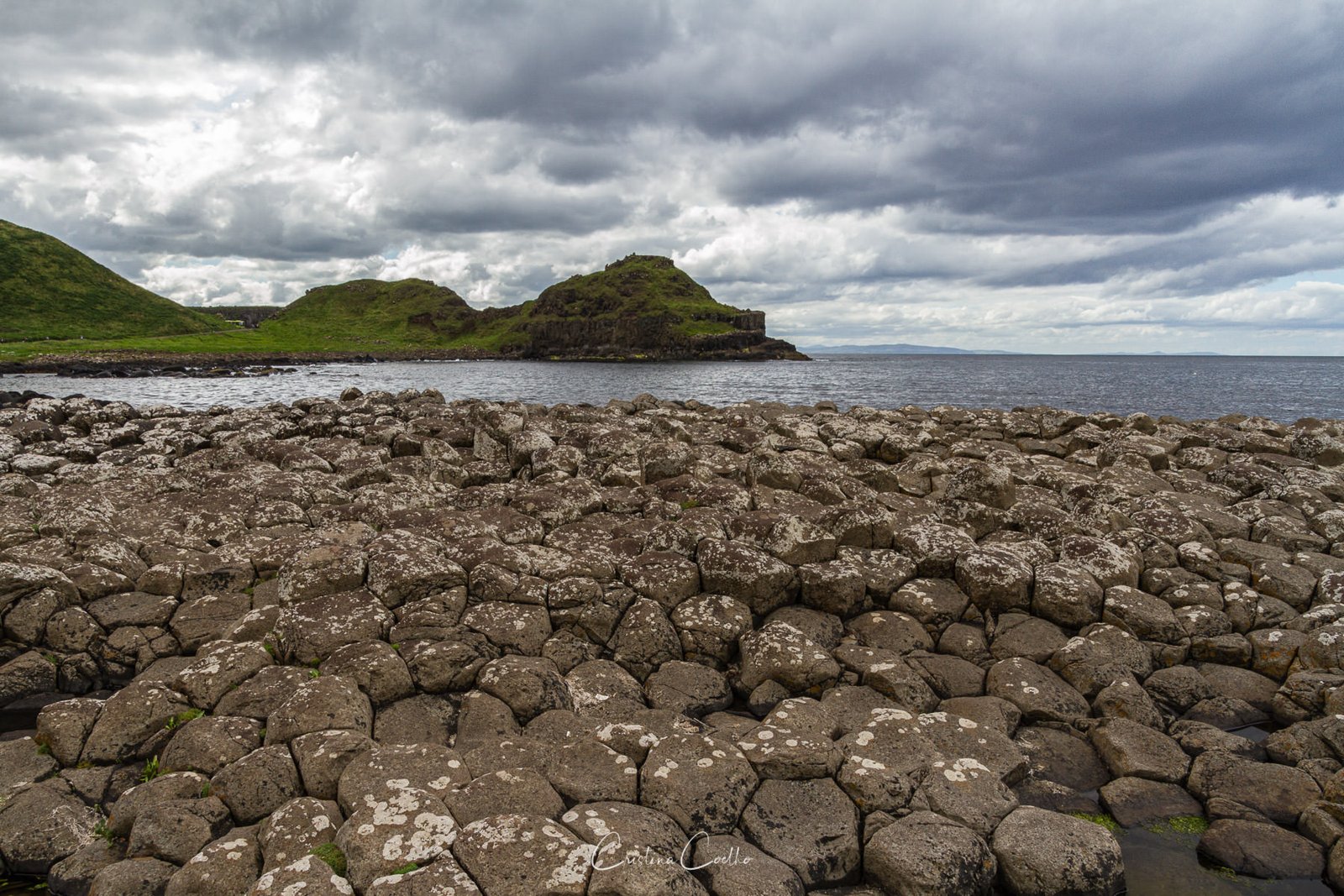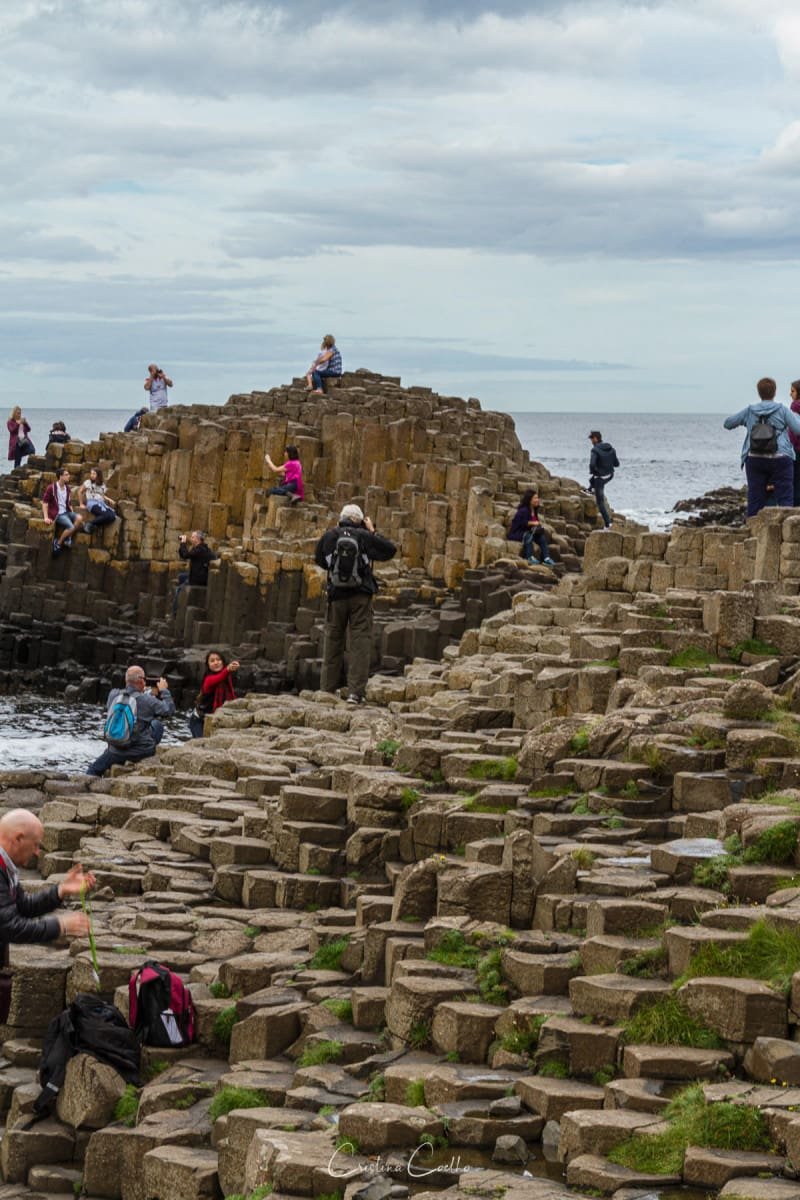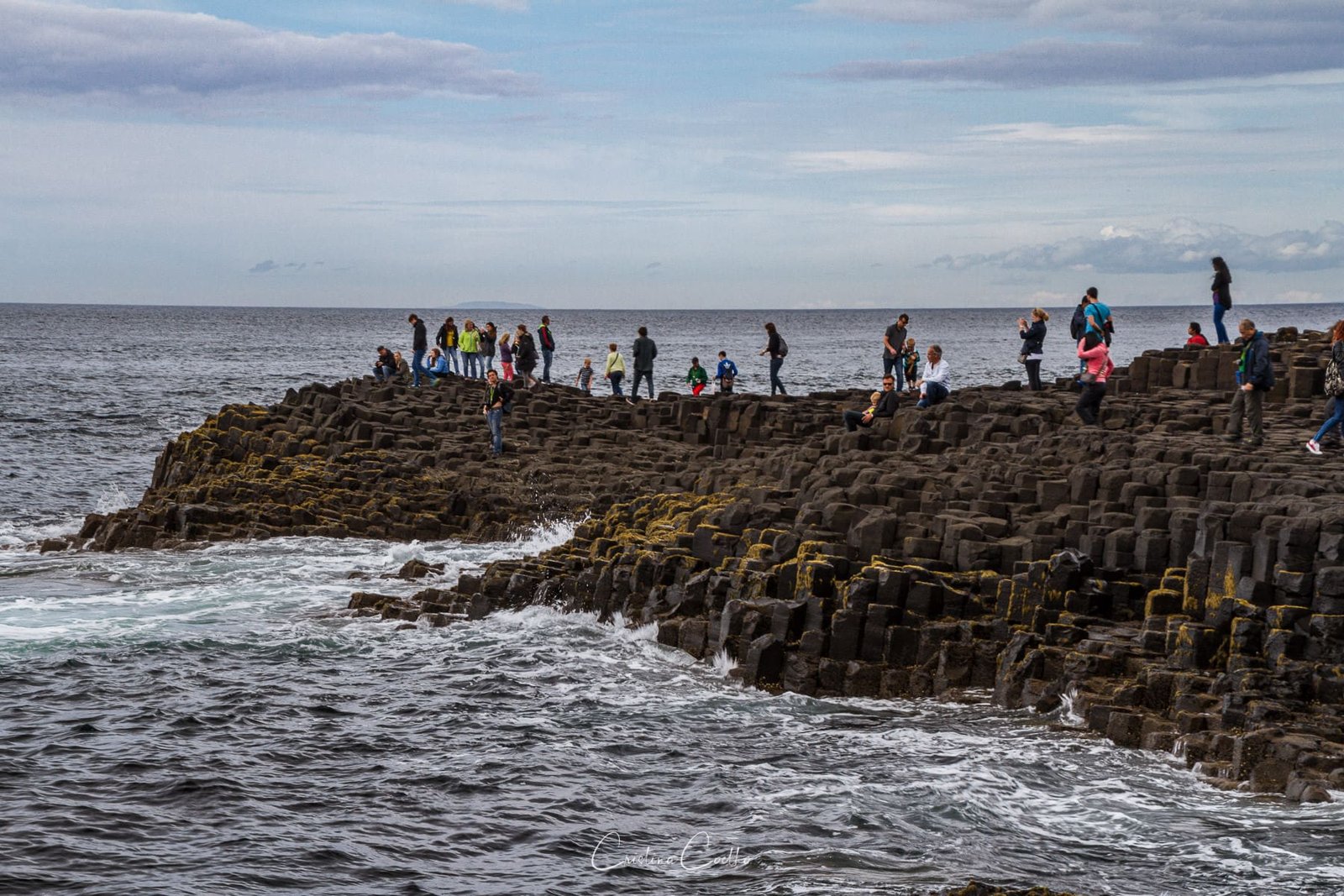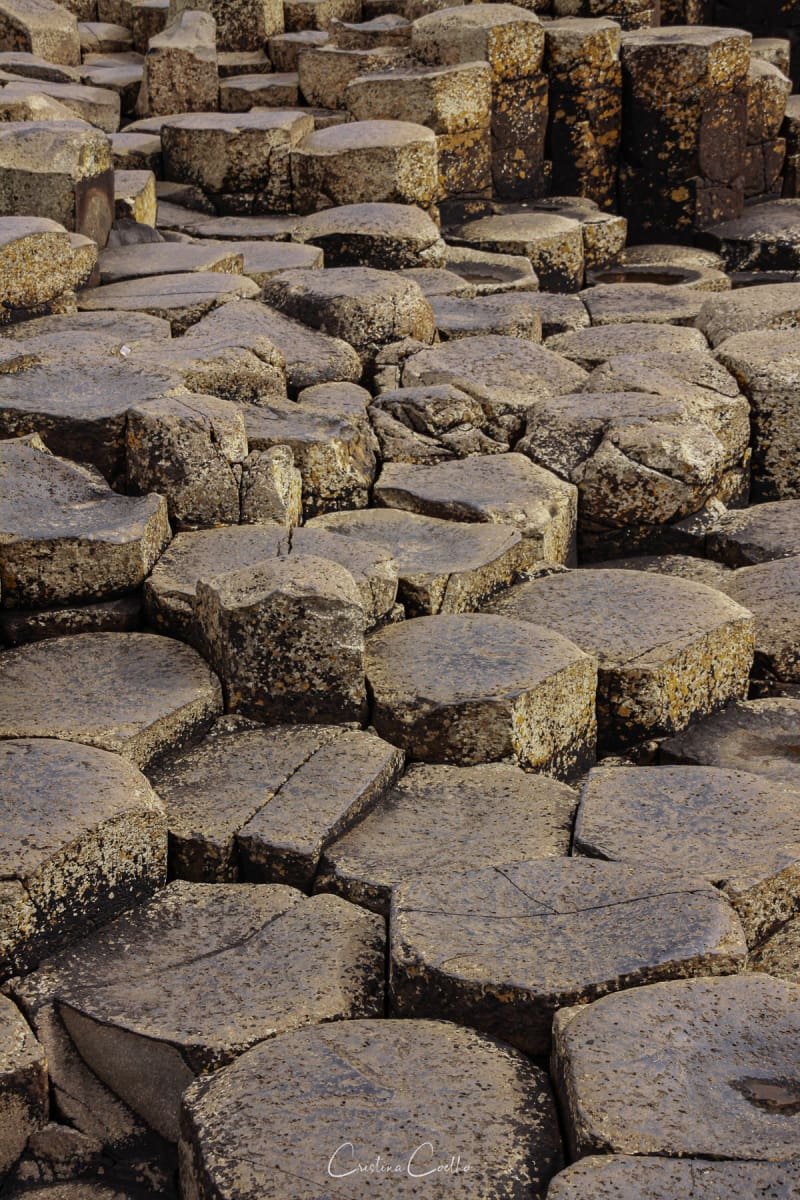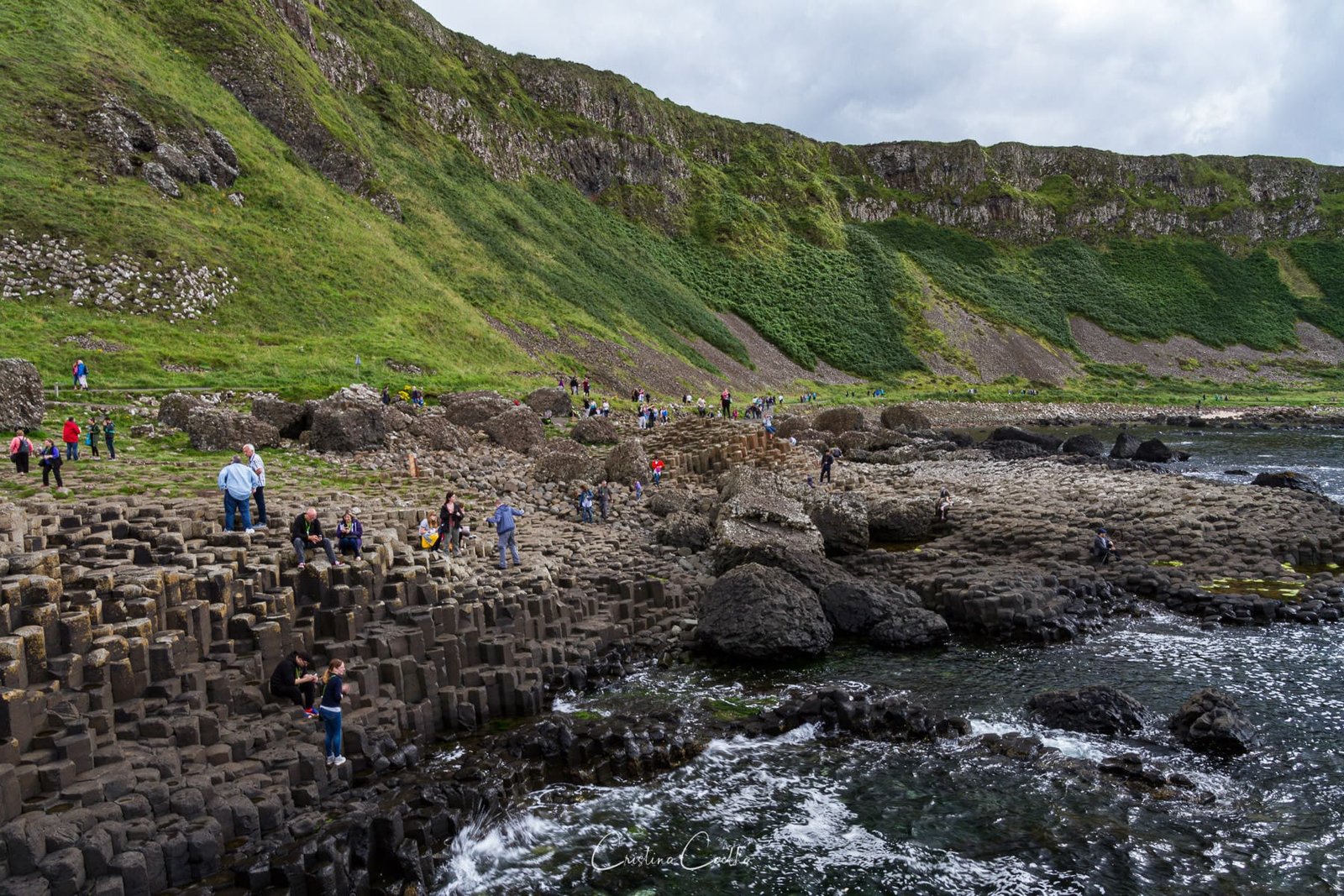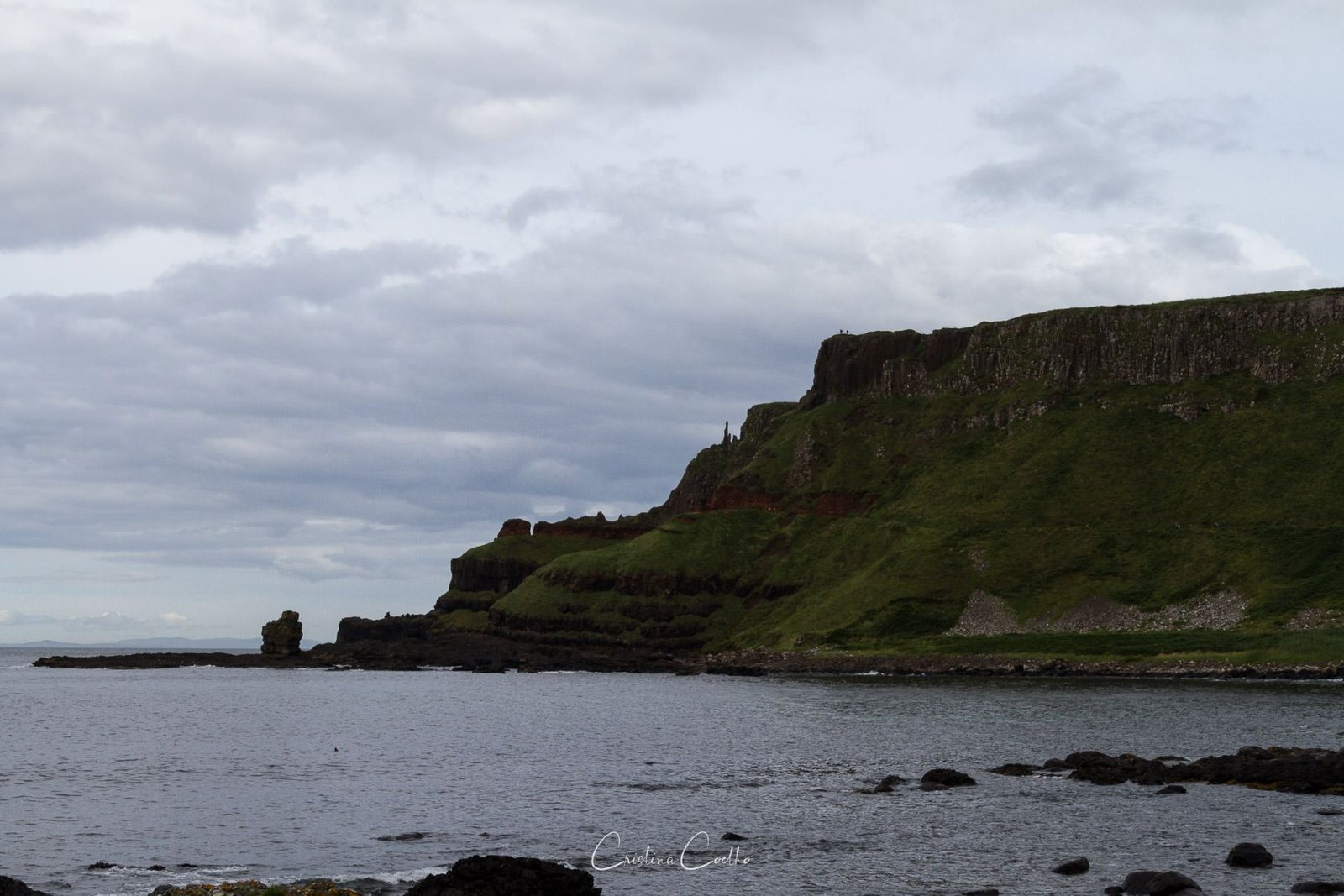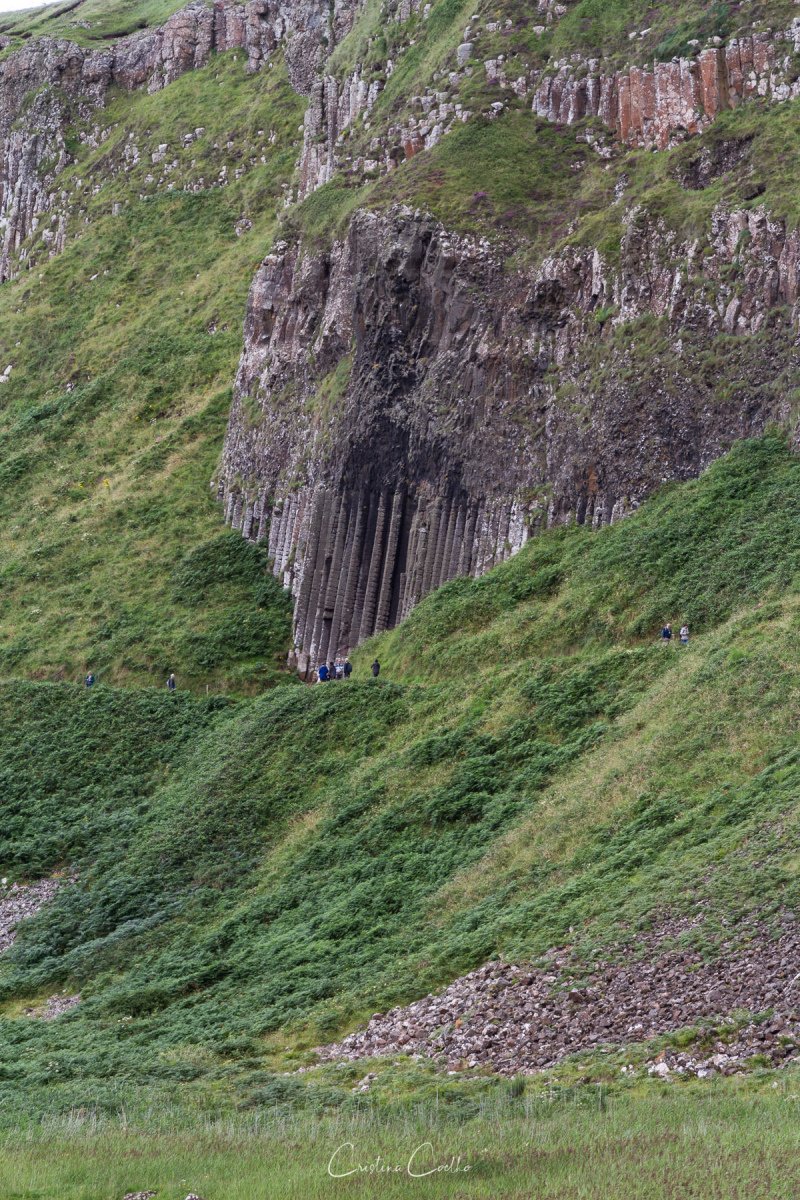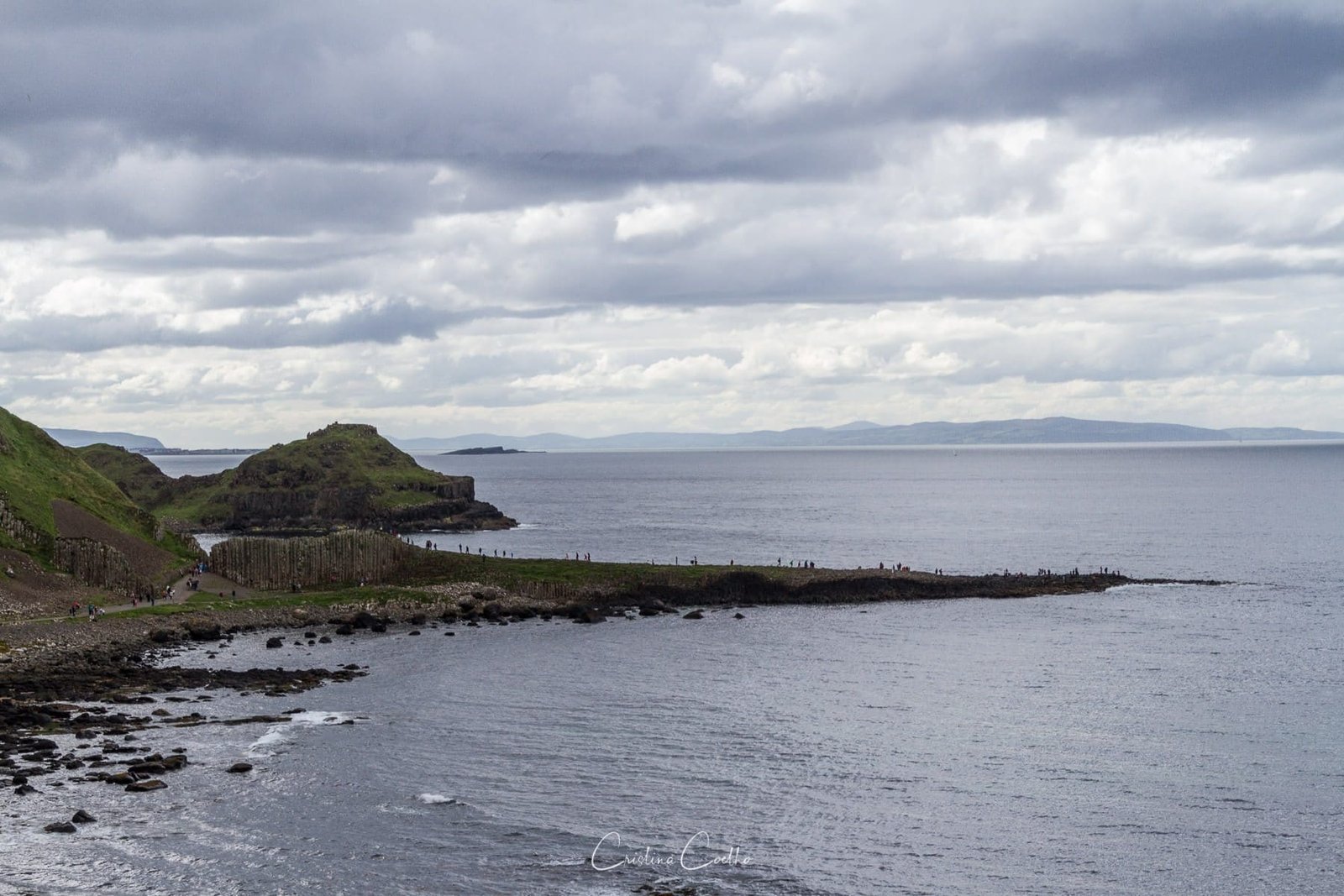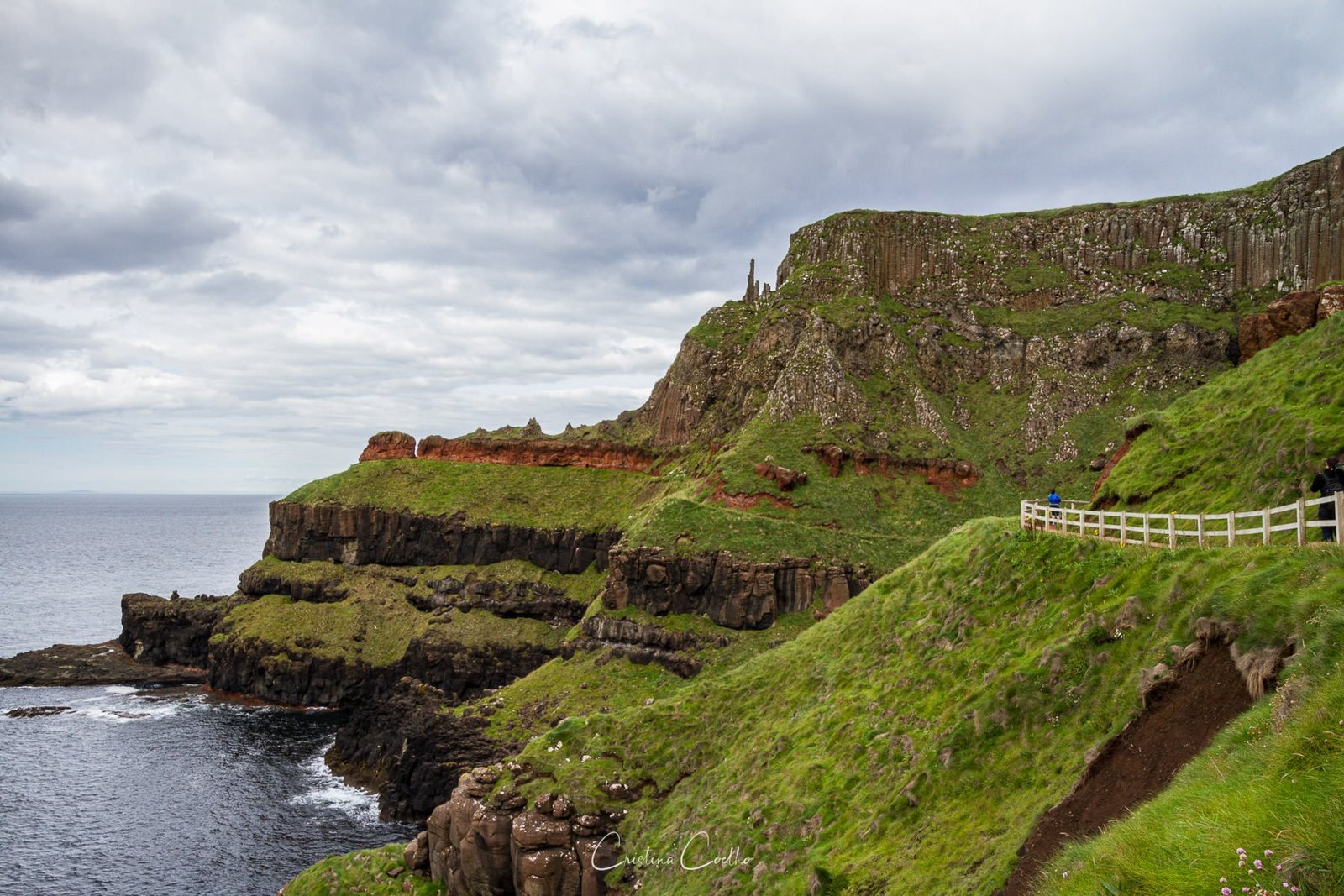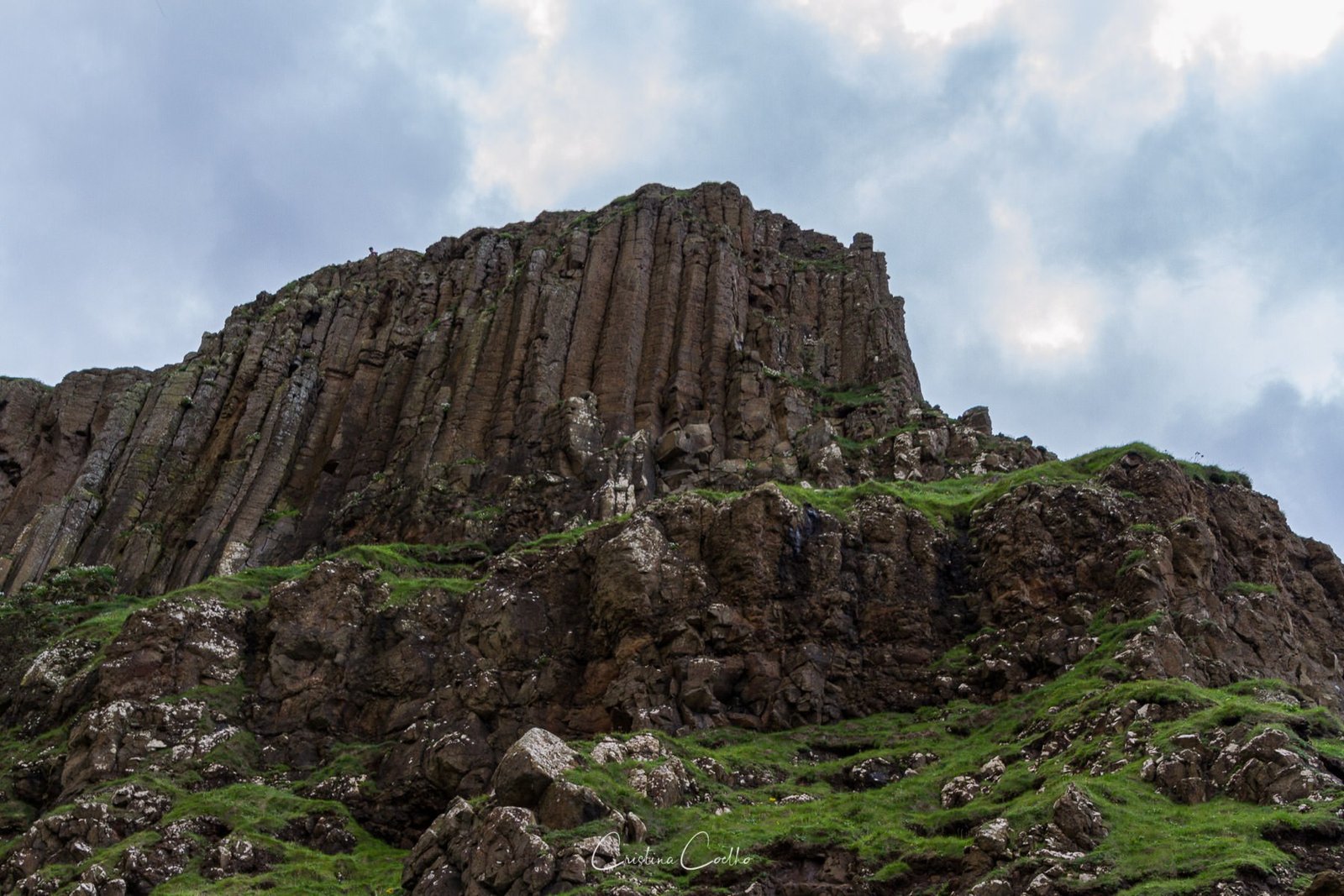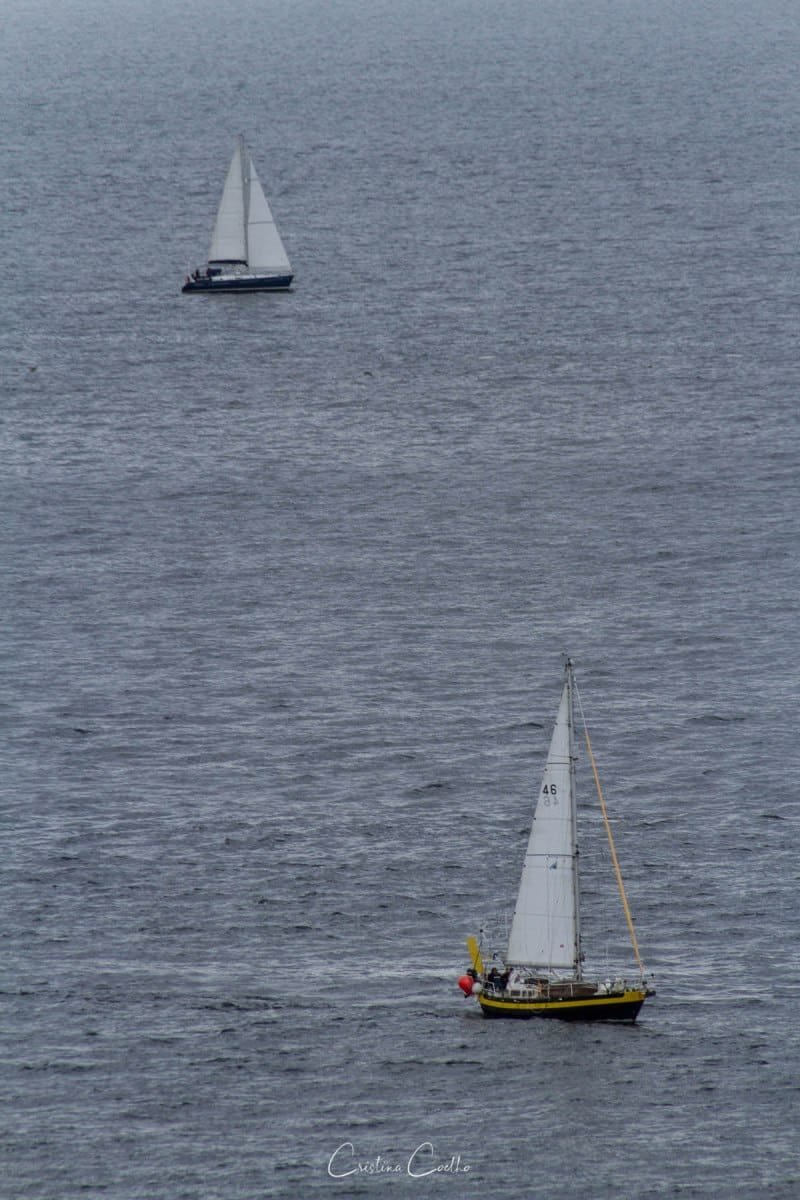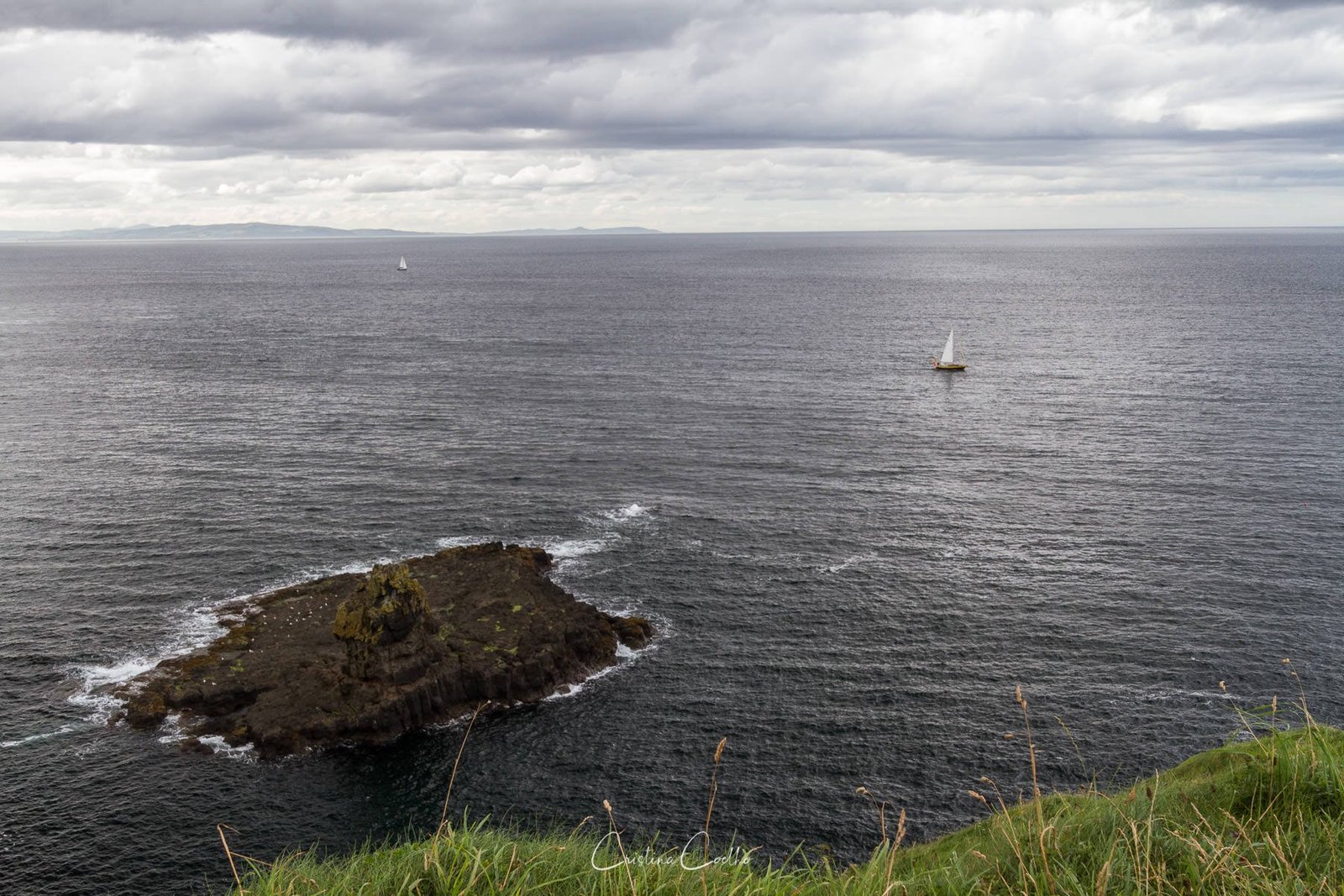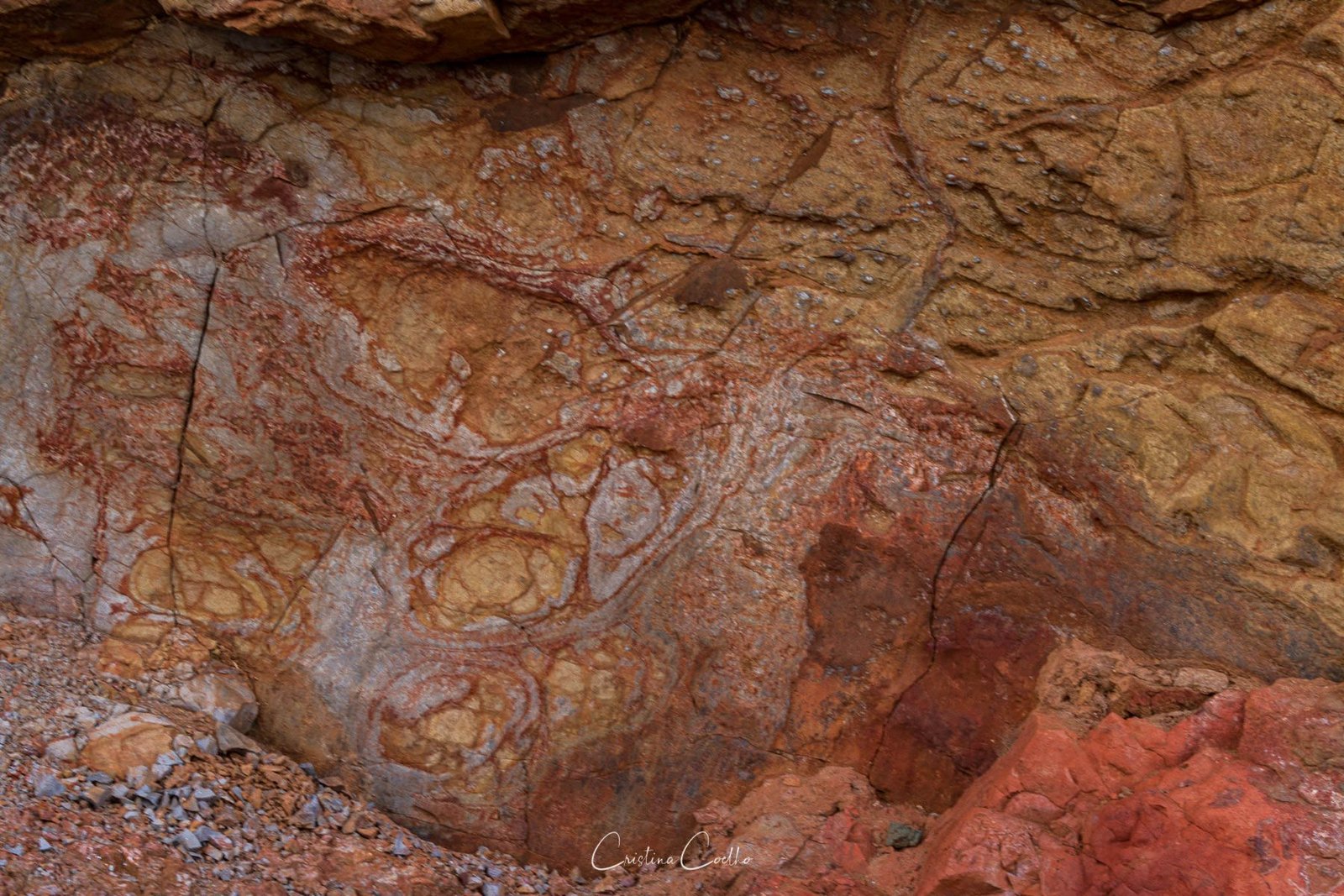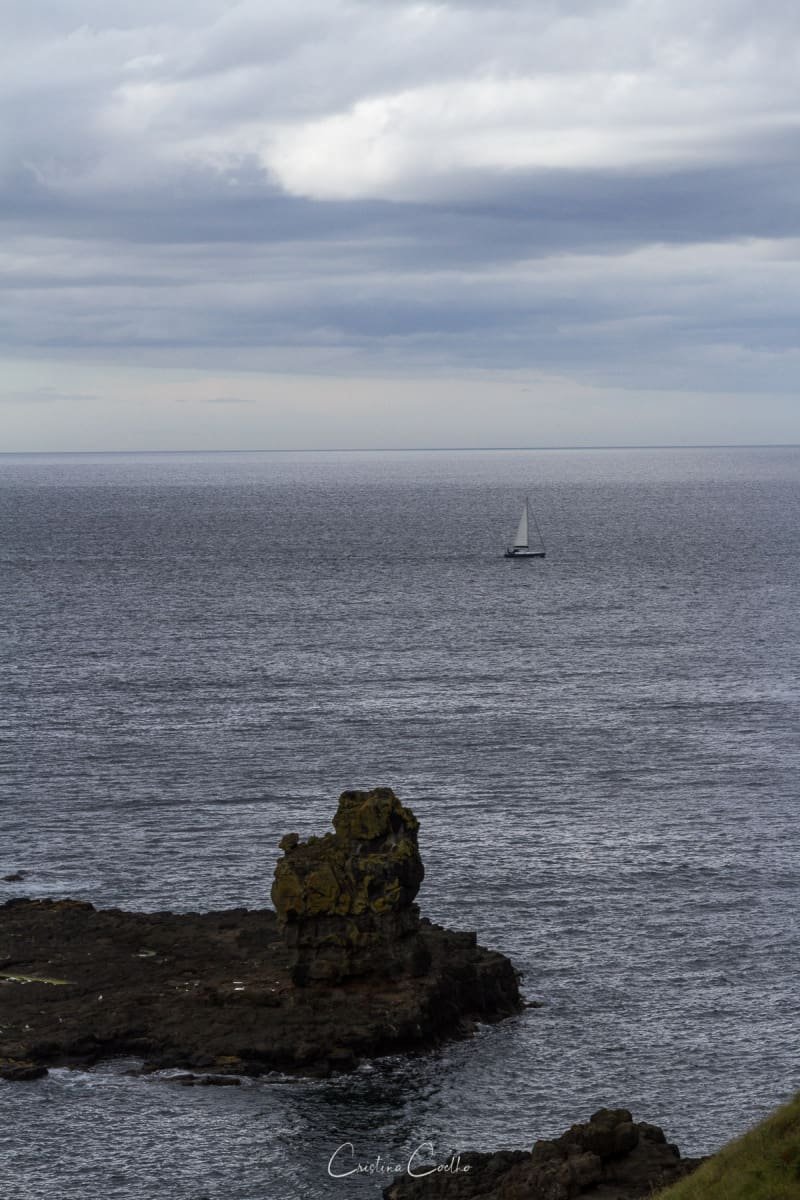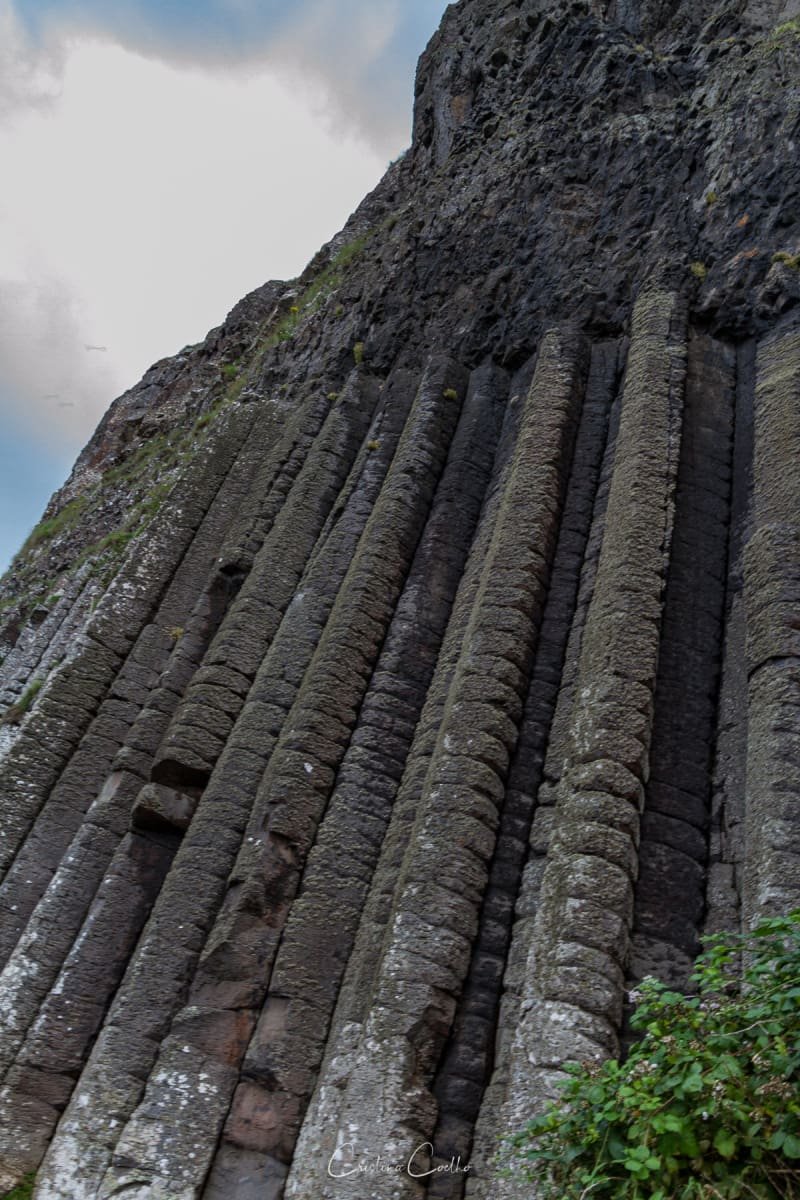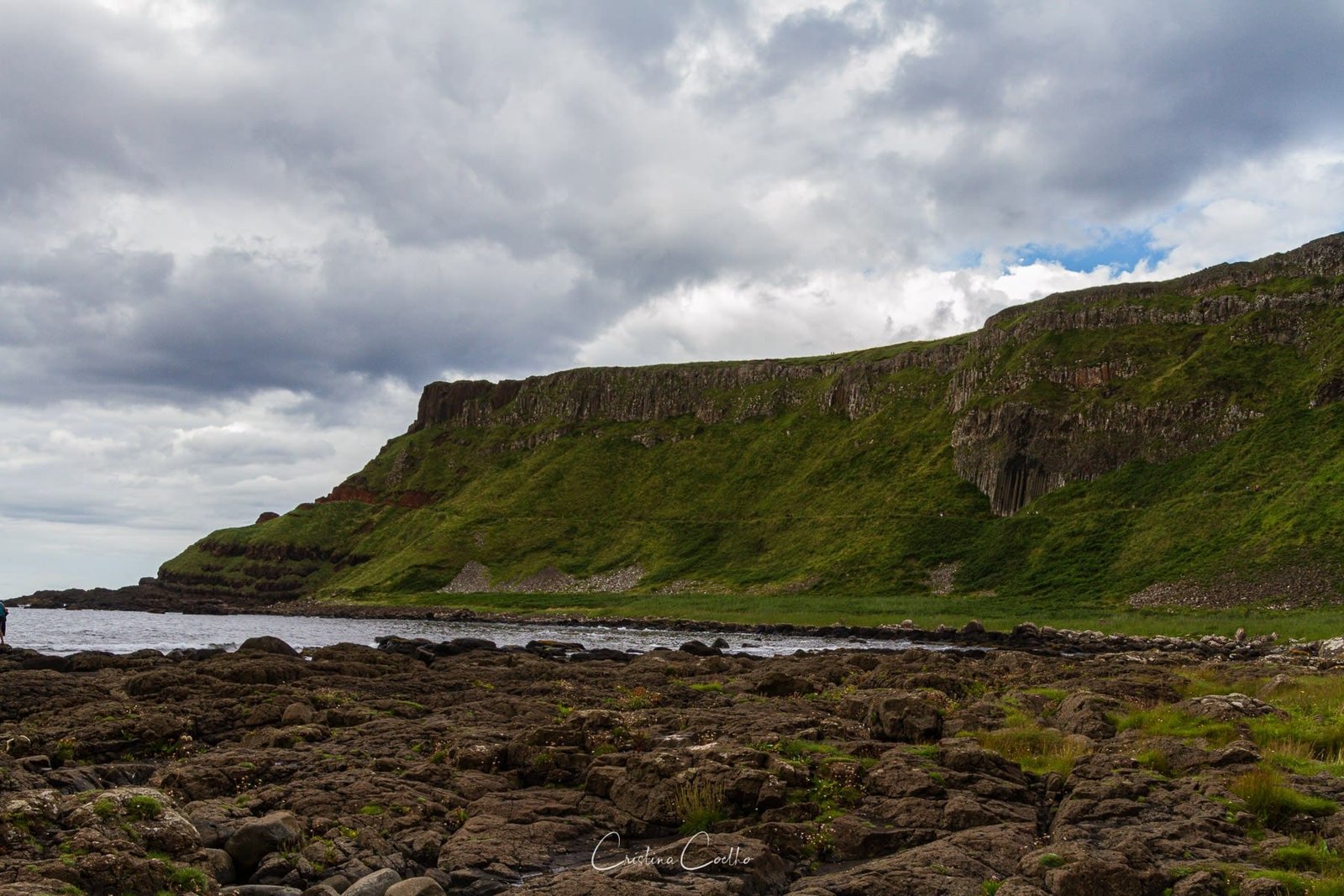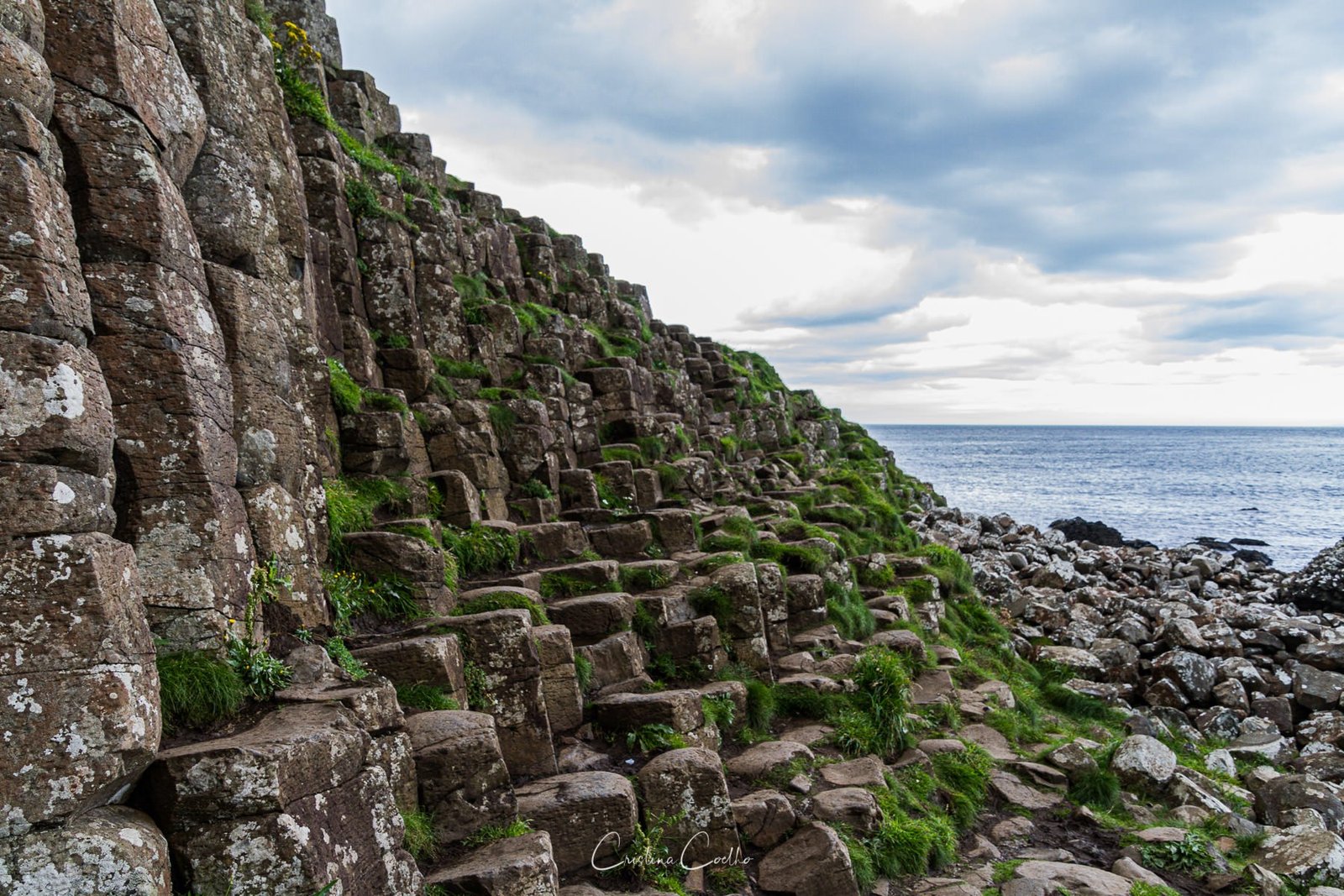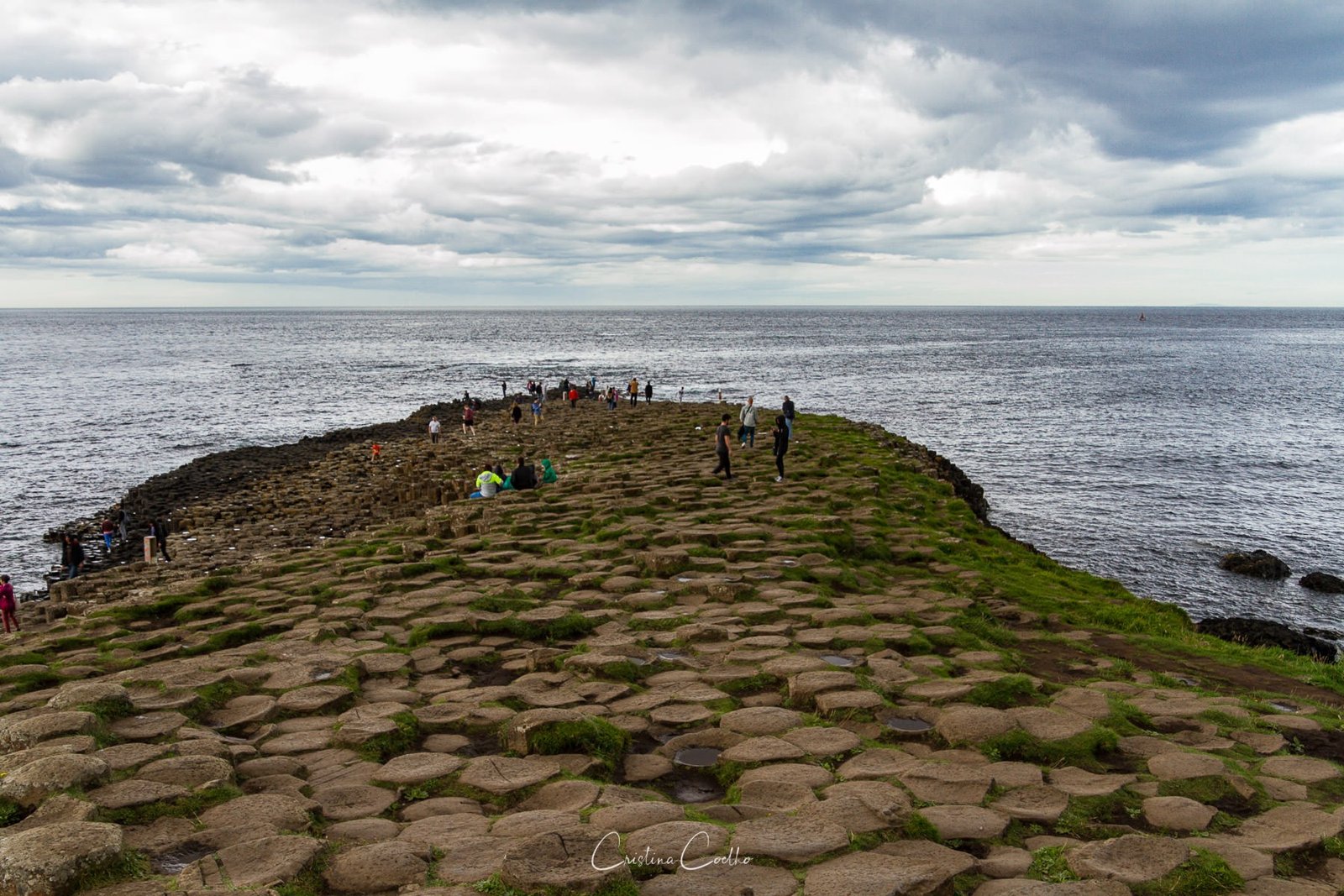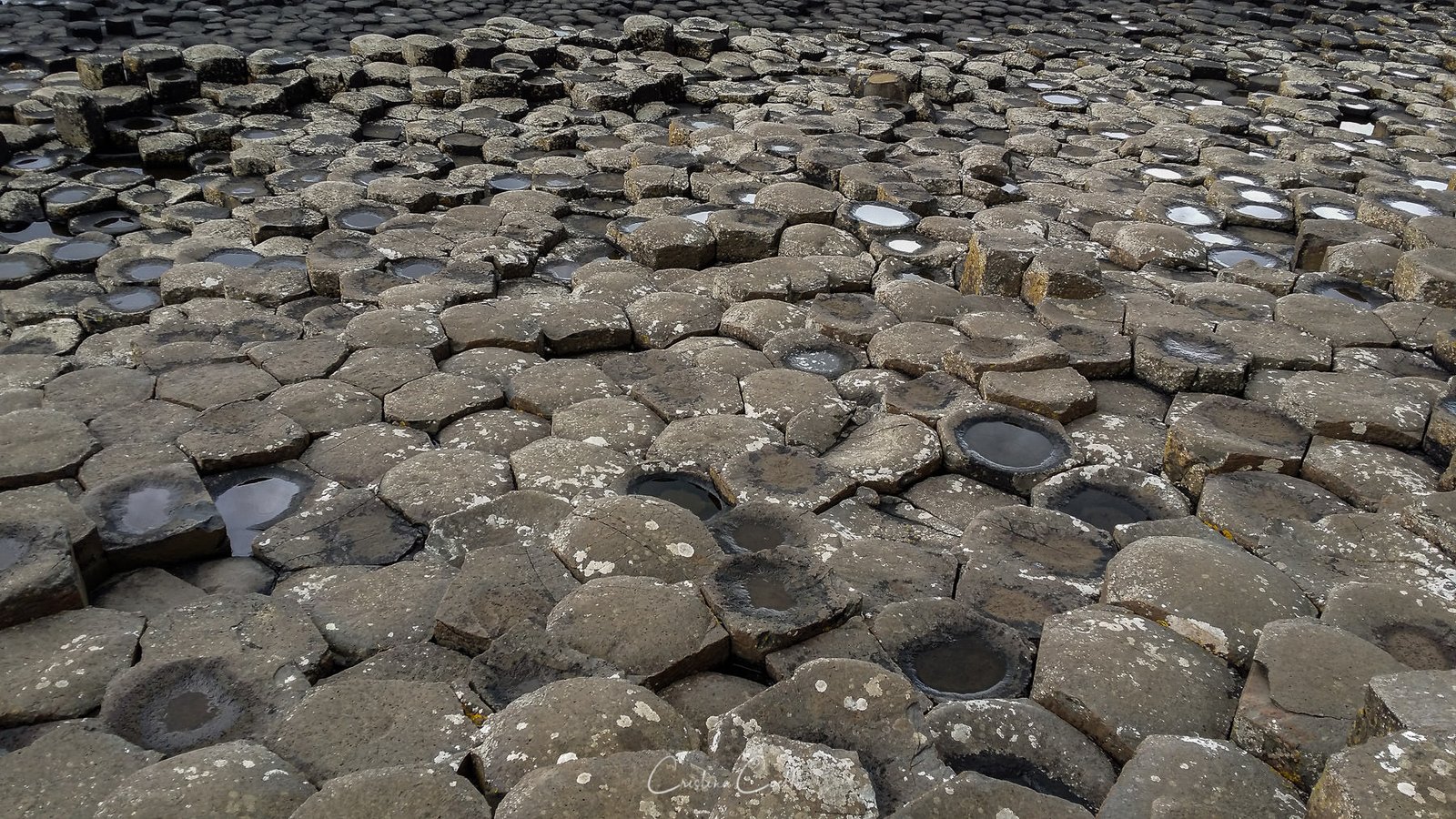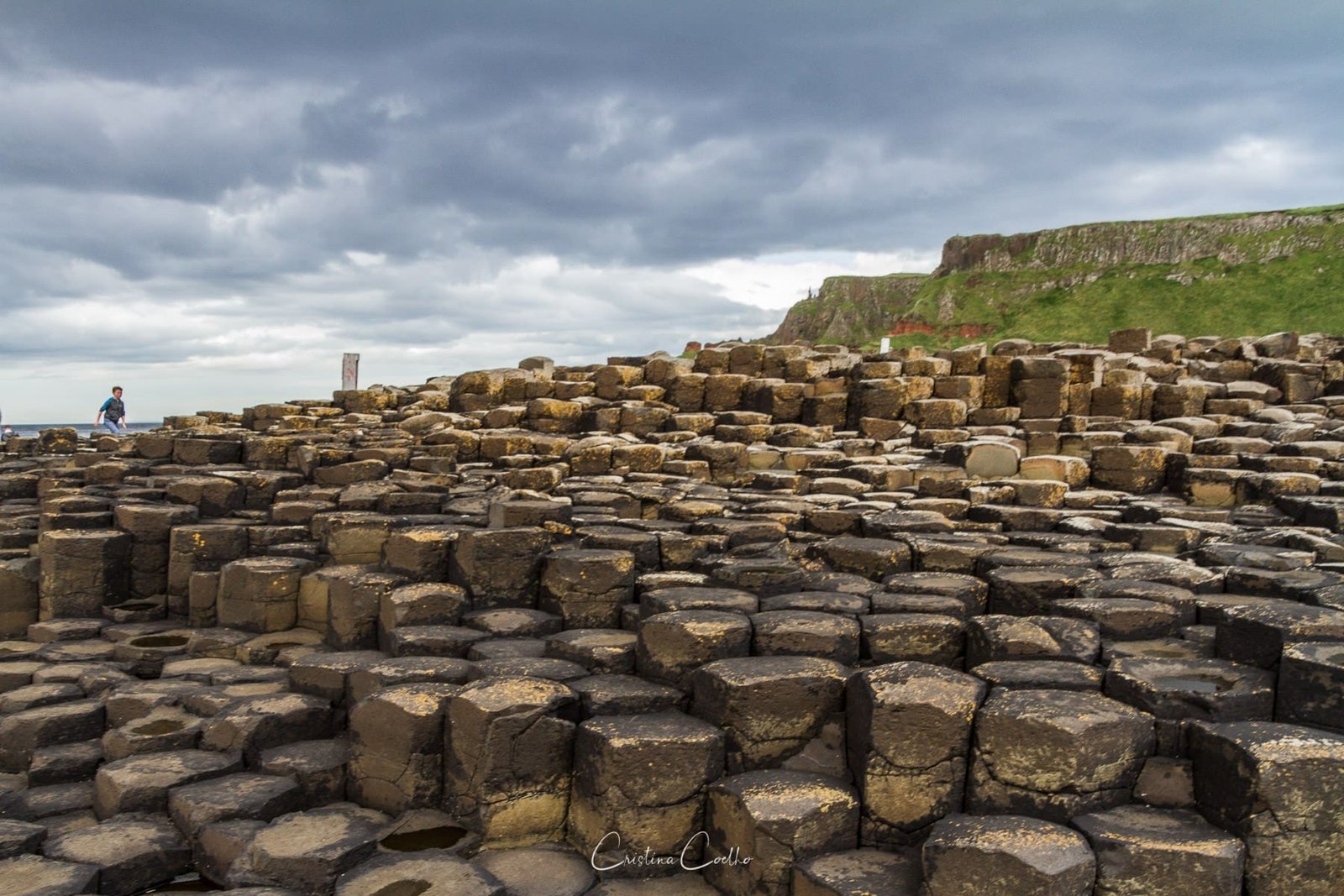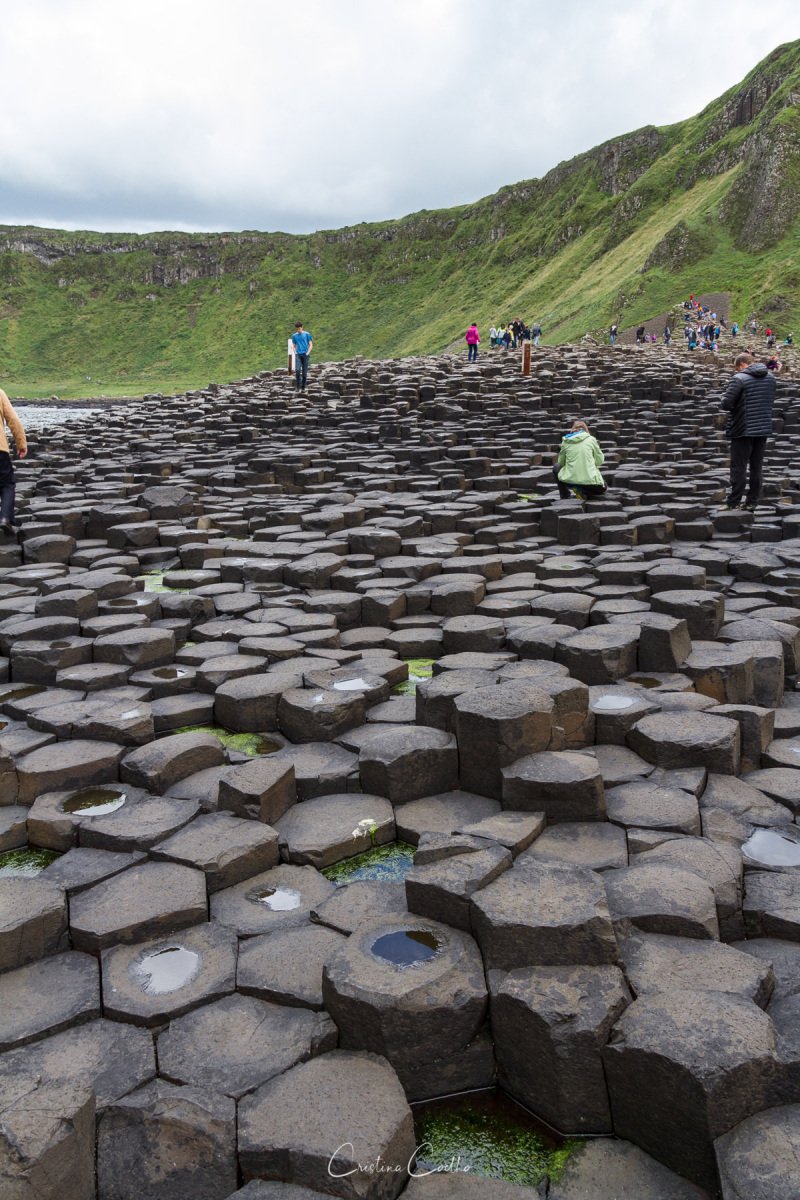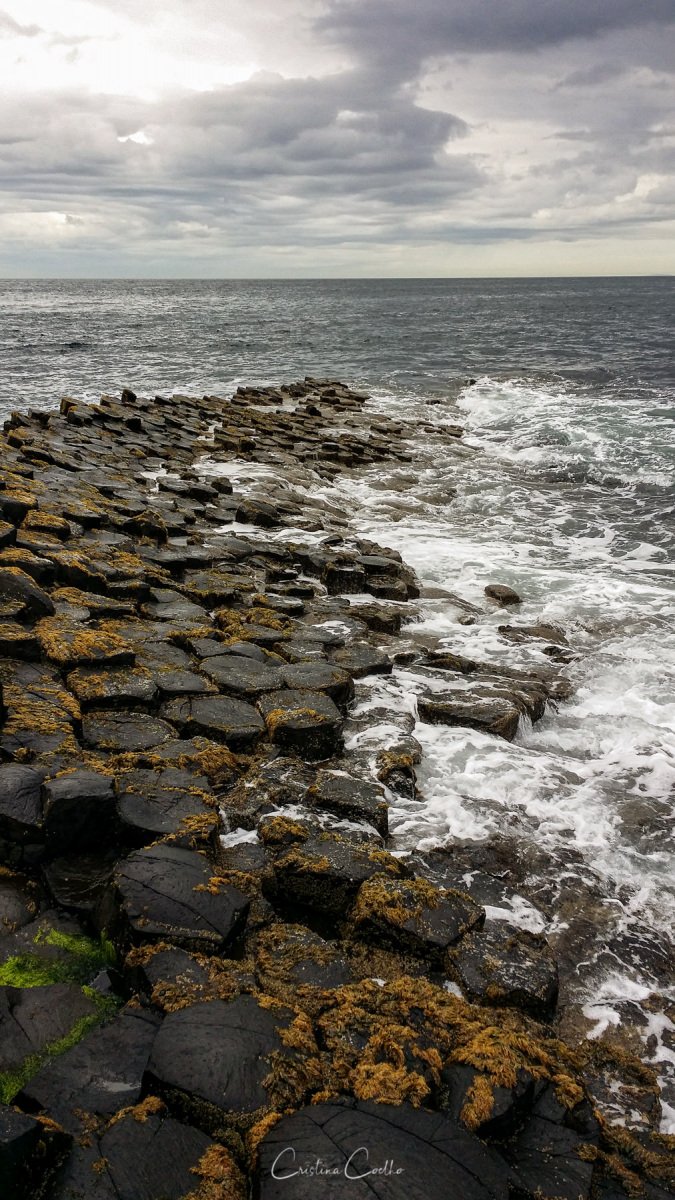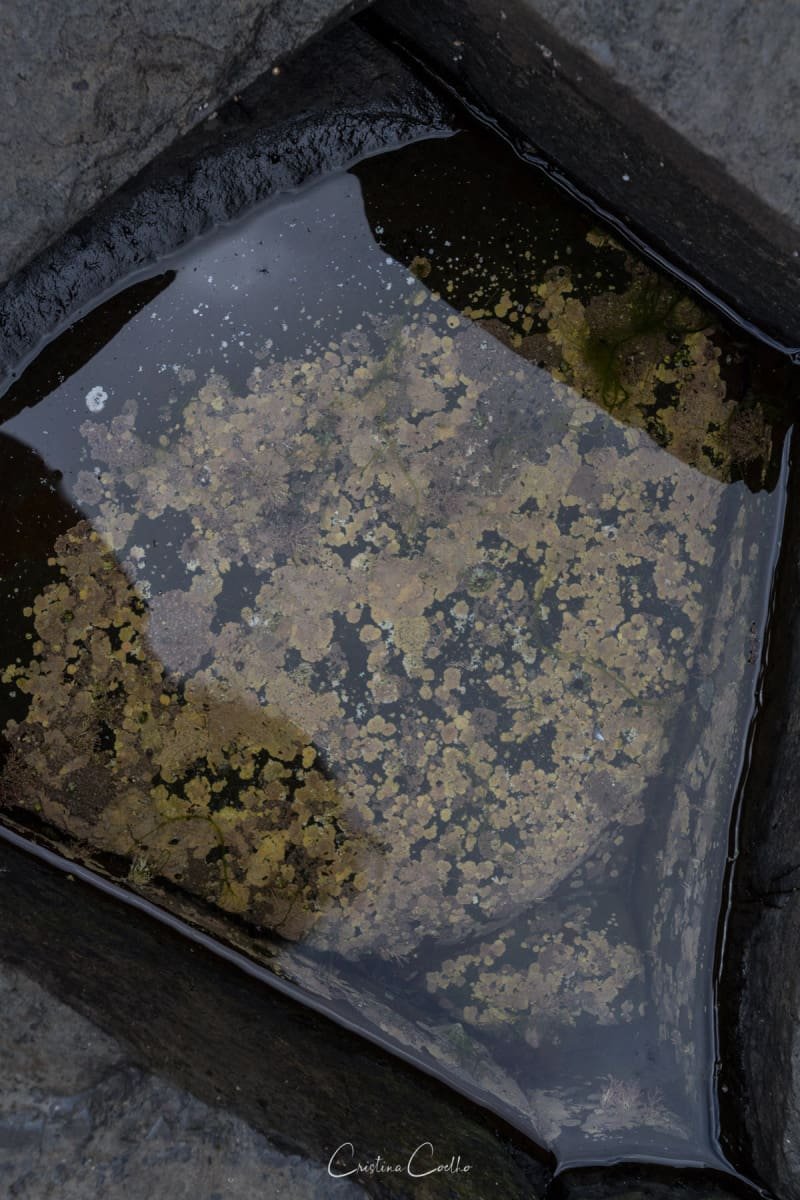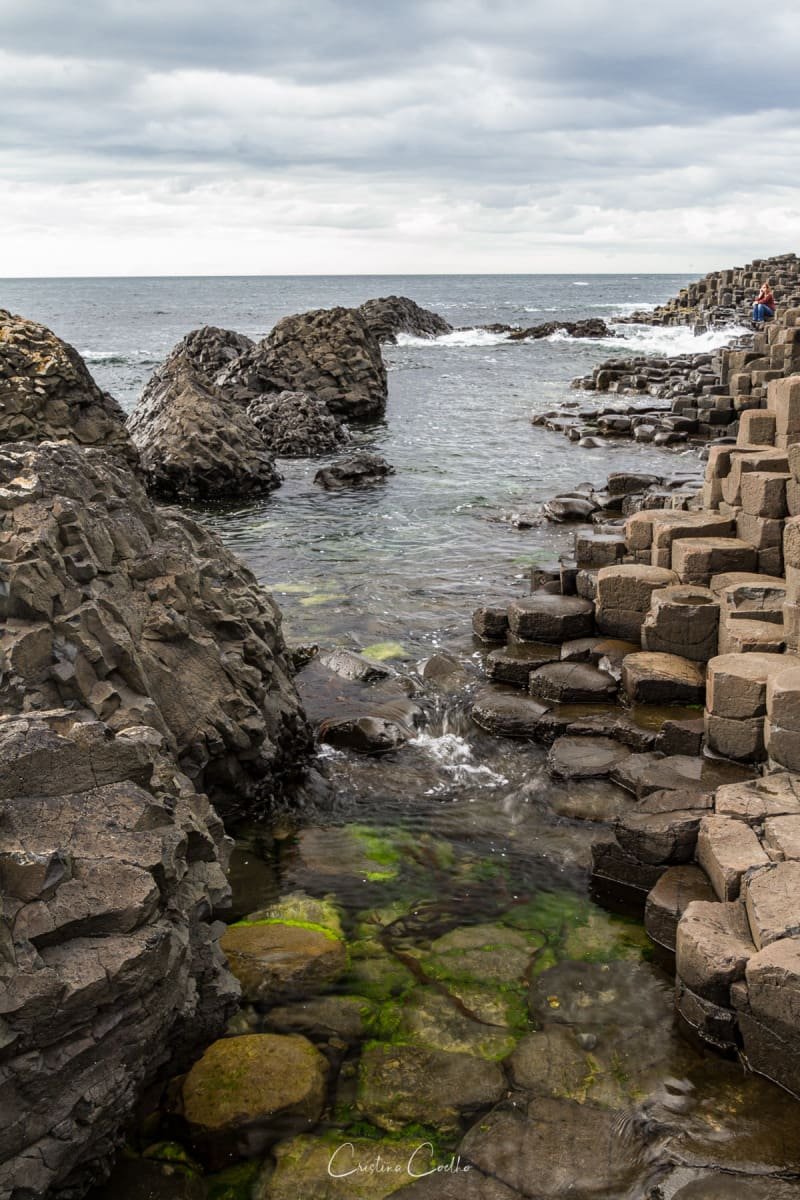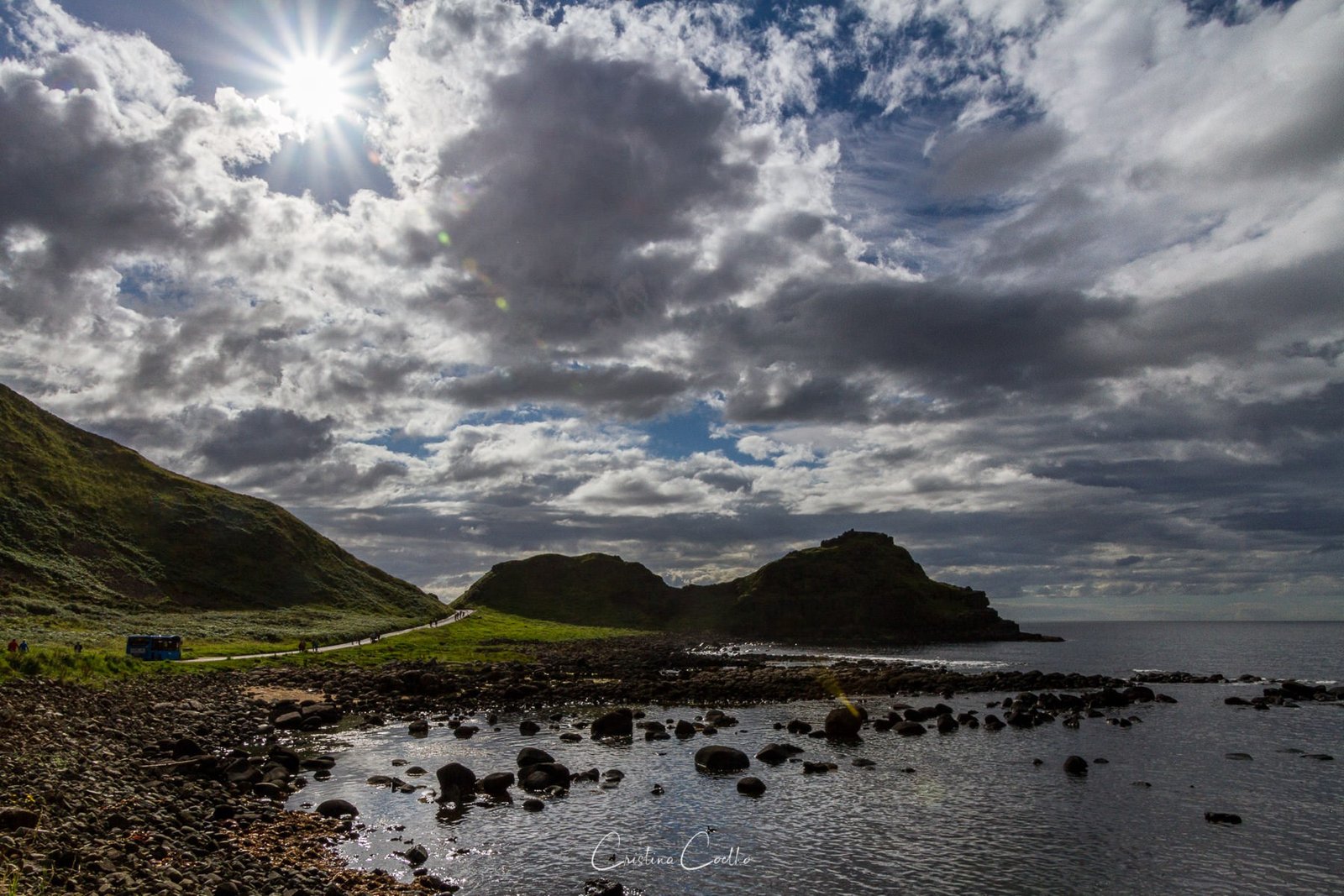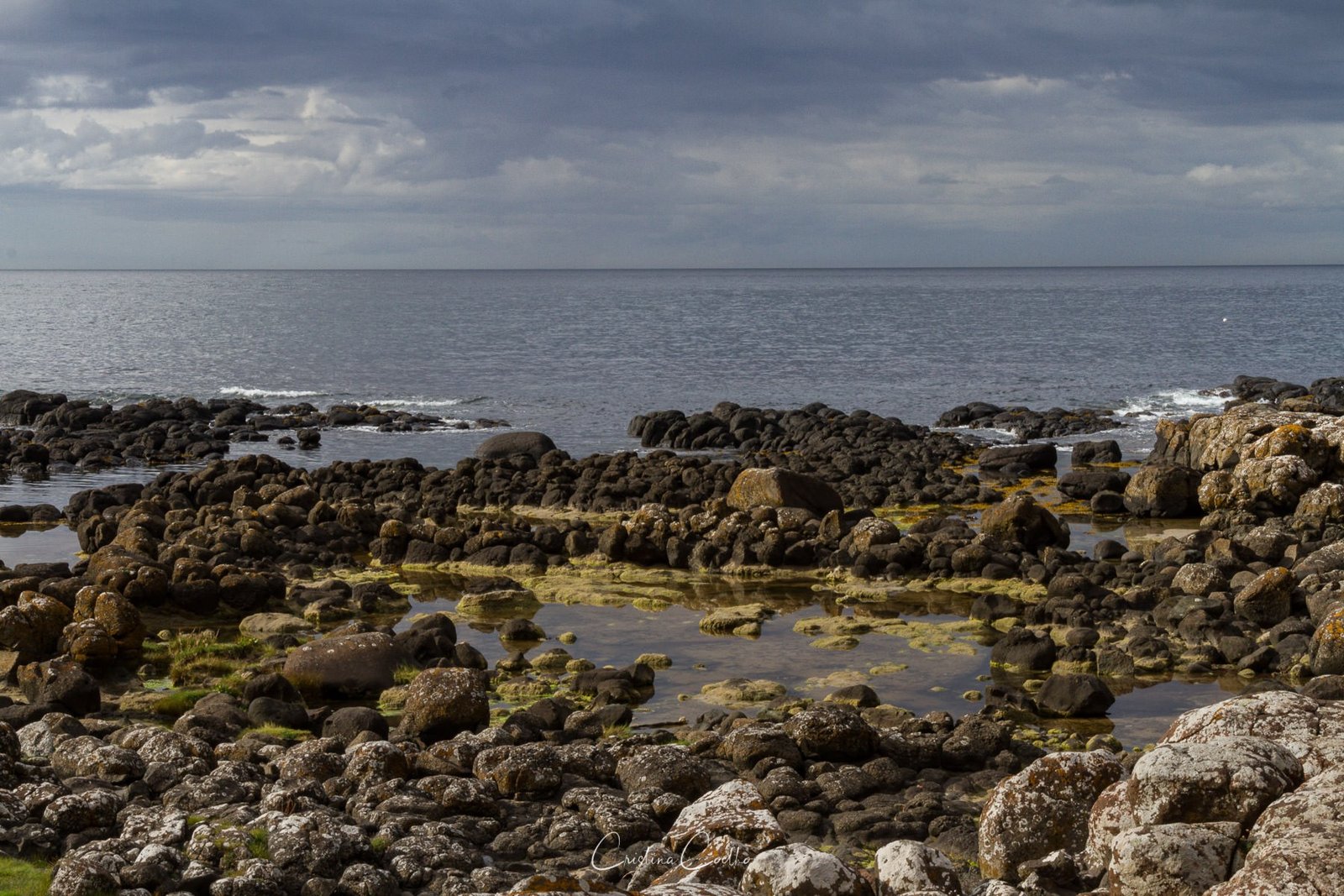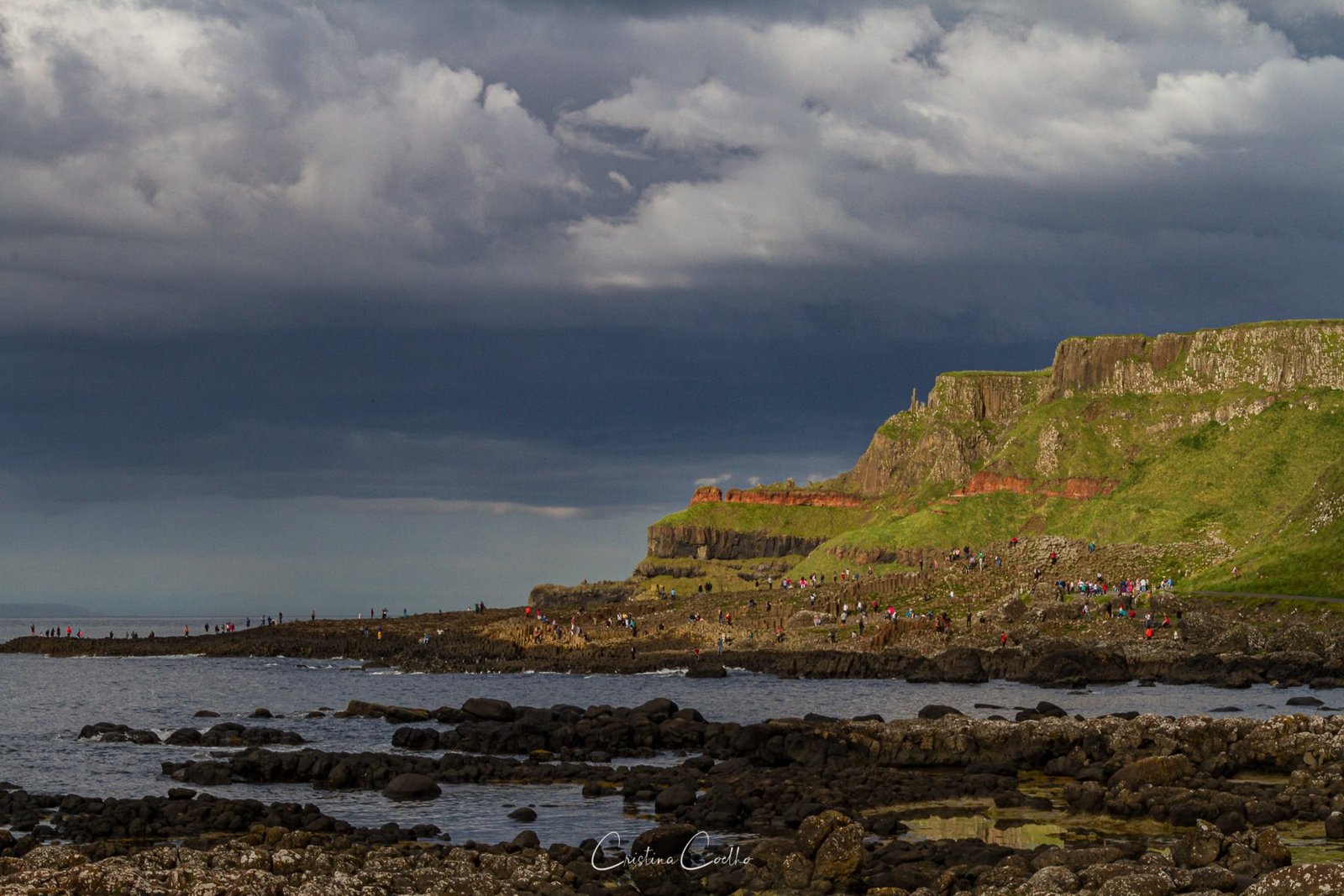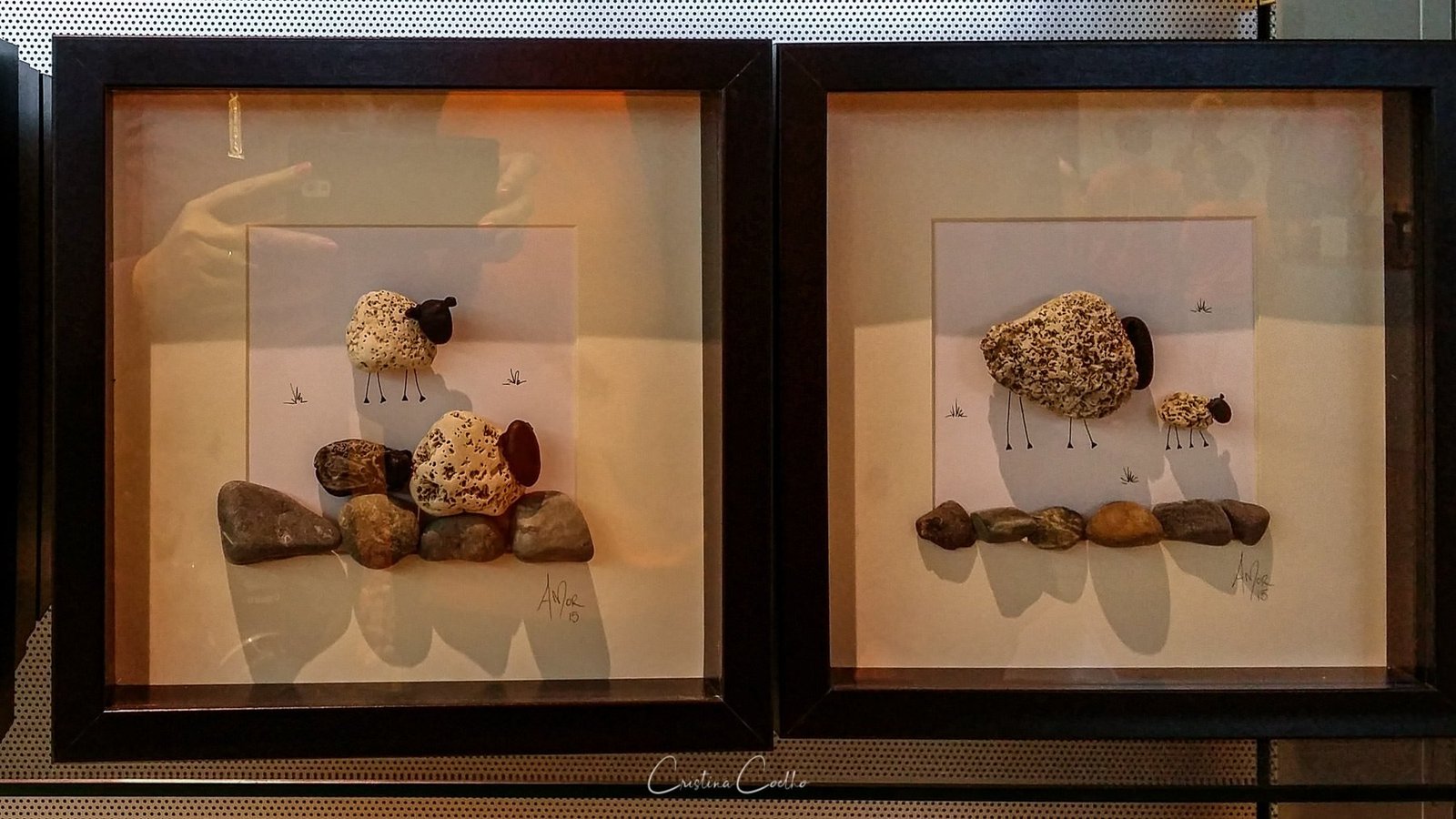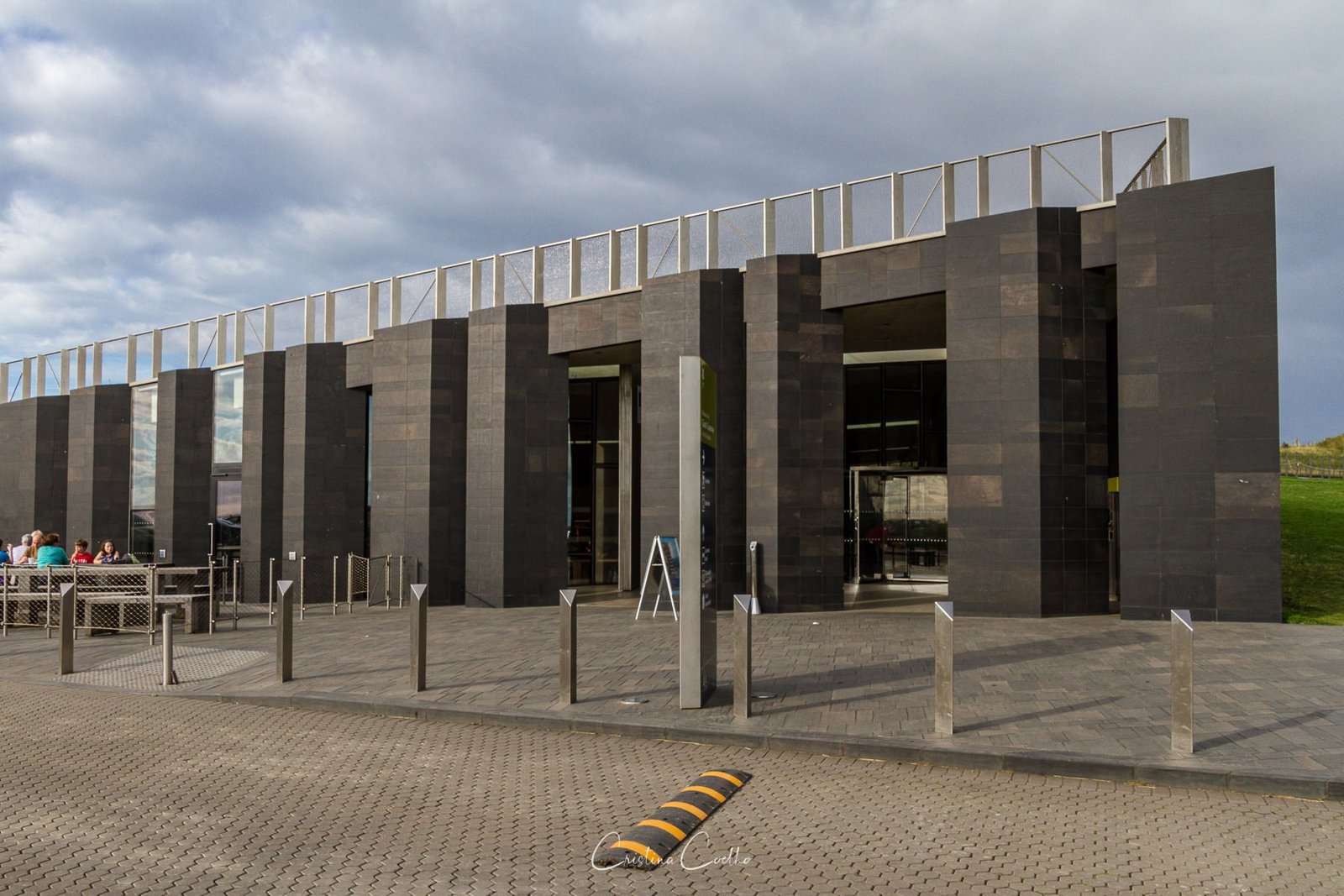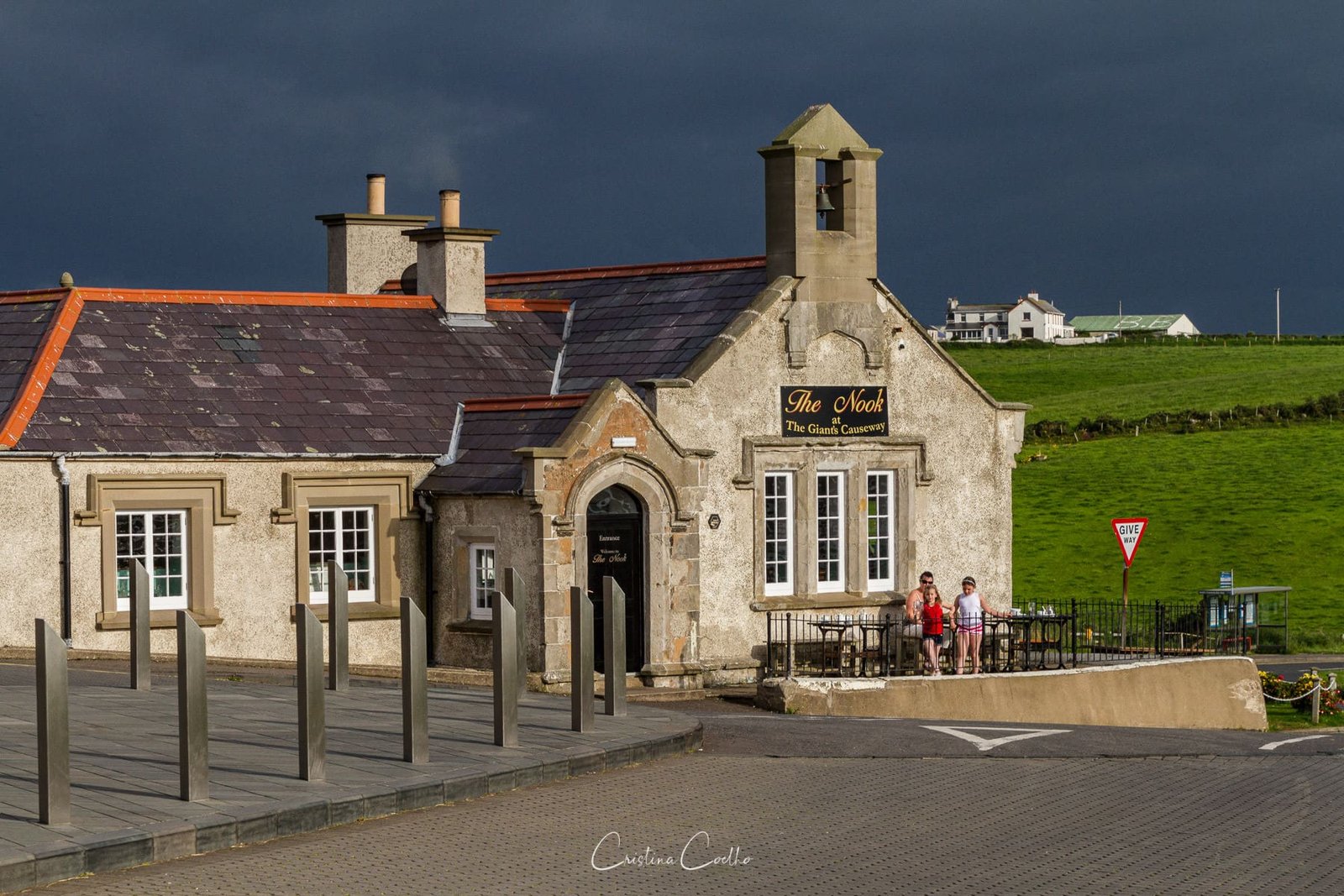The Legend
The Giant’s Causeway is steeped in myth and legend.
The Legend tells that it was carved from the coast by the mighty giant, Finn McCool, who wanted to face in a fight a Scottish giant called Benandonner.
As there was no vessel large enough to cross the sea and get one against the other, McCool solved the problem by building a causeway connecting the two sides, using huge stone pillars.
Benandonner accepted the challenge and traveled the sidewalk up to Ireland.
He was stronger and bigger than McCool.
When Finn McCool wife saw Benandonner, she took her husband to be asleep and decided to dress him like a baby.
When Benandonner arrived at their house and saw the baby, he thought: “If the baby is this size, imagine the father!”, and ran away back to Scotland.
To make sure it would not be pursued by Finn McCool he destroyed the road as he ran, leaving only the stones that now form the Giant’s Causeway.
Local people here believe that between the hexagons, the mythical features carved out in the rocks and the tumbling sea, there’s real magic.
It may not be seen straight away, but arriving to this place, stand on the stones, uncover the legends, using the imagination and just wait.
It won’t be long until we feel it.
The Geology
Sixty million years ago Antrim was subject to intense volcanic activity, when highly fluid molten rock was forced up through fissures in the chalk bed to form an extensive lava plateau.
The dramatic cliff like edge of the plateau forms the Causeway coastline.
The larger fissures, through which the lava flowed, can be clearly seen as bands of dark rock which cut down the cliff faces and jut out to sea.
There were three periods of volcanic activity which resulted in the flows, known as the Lower, Middle and Upper Basalts.
It is the Middle Basalts rocks which forms the columns of the Giants Causeway.
The rapidly cooling lava contracted and variations in the cooling rate resulted in the world famous columnar structure.
In Portugal, in Flores Island Açores, we have also the “Rocha dos Bordões” also the result of the same volcanic phenomenon that in Giant’s Causeway.
The columns are mainly hexagonal though there are some with up to eight sides.
Weathering of the top of the lower Basalts formed the Inter Basaltic Bed – the band of reddish rock which is a feature of the area.
The same action of the weather created circular formations round a nugget of basalt which are known locally as “giants’ eyes”.
Some other formations with popular names are the Chimney Stacks, The Harp, The Organ and the Humphrey the Camel.
This place is a UNESCO World Heritage Site.
A geological wonder with over 40.000 interlocking basalt columns.
An epic 60 million year-old legacy to the cooling and shrinking of successive lava flow.
This is a wonderful place to visit and enjoy the nature the sea and the birds.
It is a pity that there was too much crowd but it is a tourist point and everybody want to come to enjoy the place.
Adapted from: The Giant’s Causeway Official Guide and Wikipedia{:}






